A chess tattoo is more than a picture. It shows a love for thinking and strategy. Many people choose chess ink to show their passion for the game. These tattoos can be small and simple or big and detailed. They turn a chess idea into art that you wear every day.
Chess tattoos are popping up more on Instagram and Pinterest. Players, fans, and creative people all pick them. If you like chess or admire its ideas, a tattoo can tell your story. It can shout, “I plan,” or whisper, “I move with care.”
What Your Chess Tattoo Says About You
Each chess piece has a special meaning. A chess tattoo can share your values without words.
A king or queen often stands for loyalty and power. Couples sometimes get matching queen and king pieces. The knight shows clever moves and bold choices. Pawns stand for hard work and small steps that lead to big wins. The bishop can mean faith or precise thought.
Beyond pieces, chess tattoos can mean life lessons. They can stand for strategy, patience, or mental strength. Some people use a chess tattoo to show their love for learning or for the way they think.


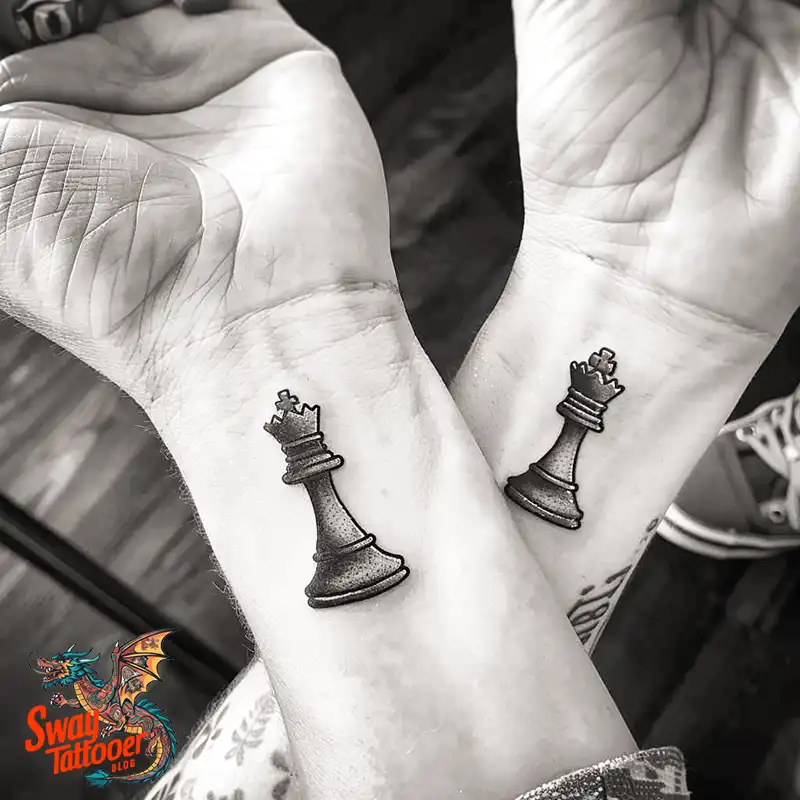
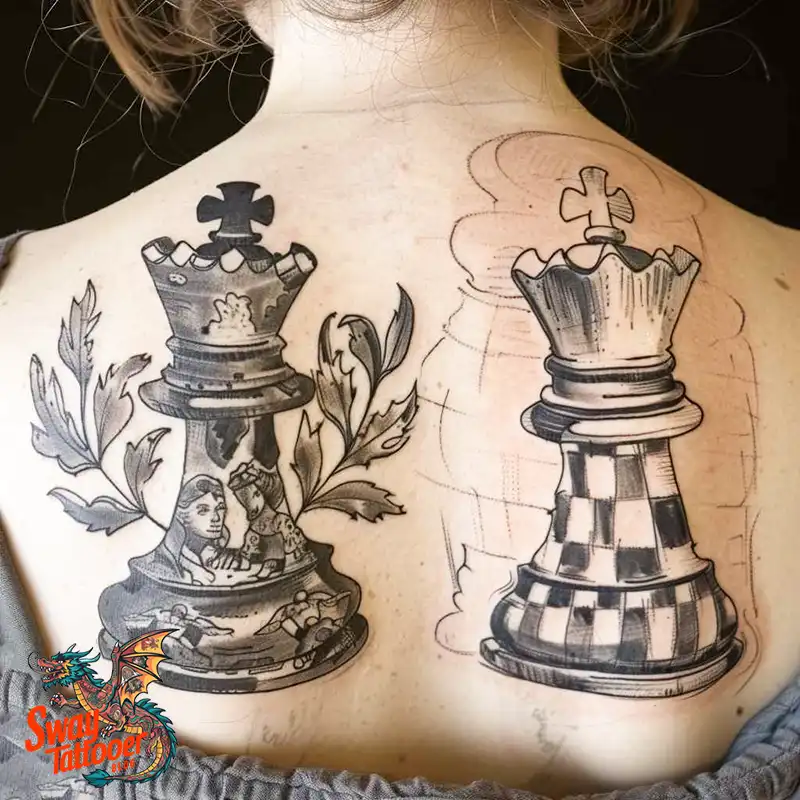
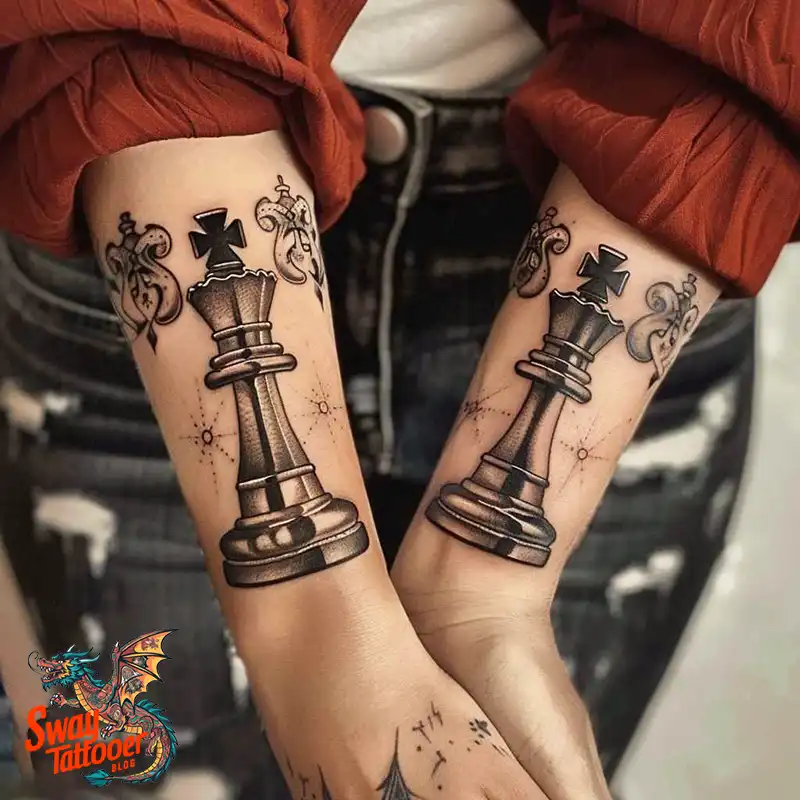
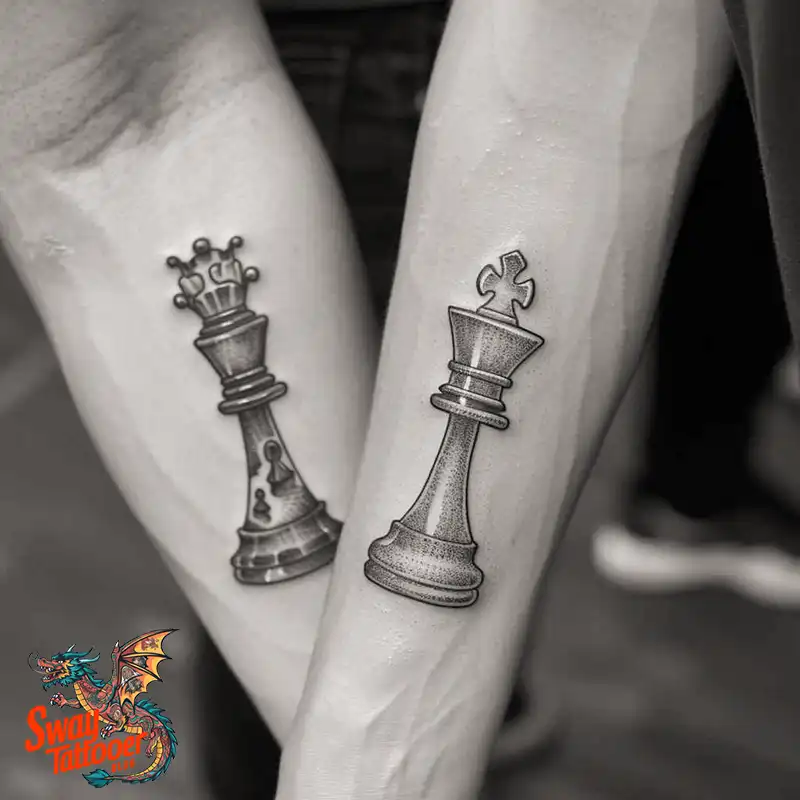
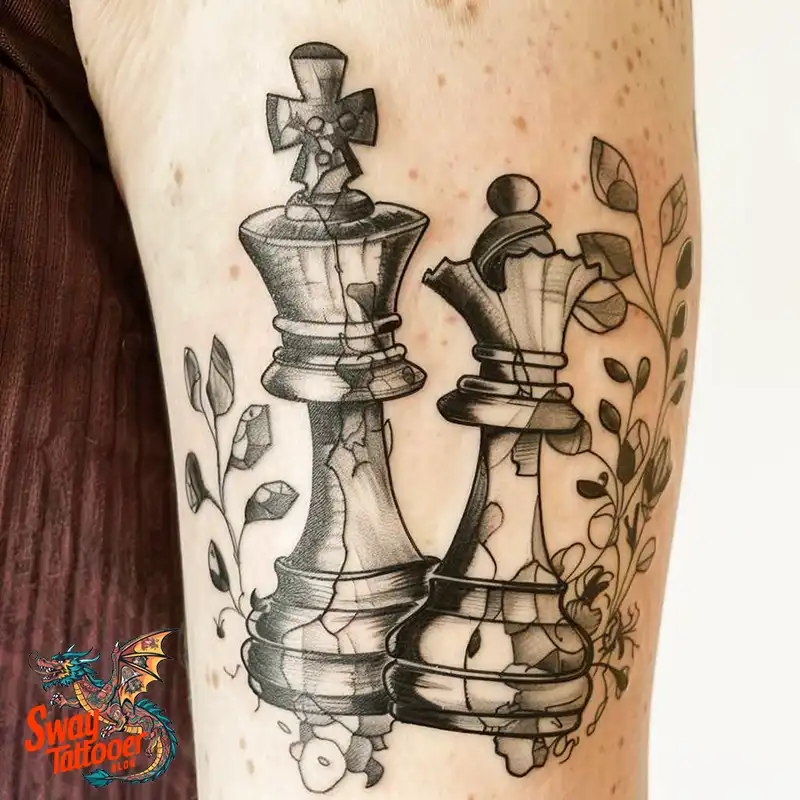
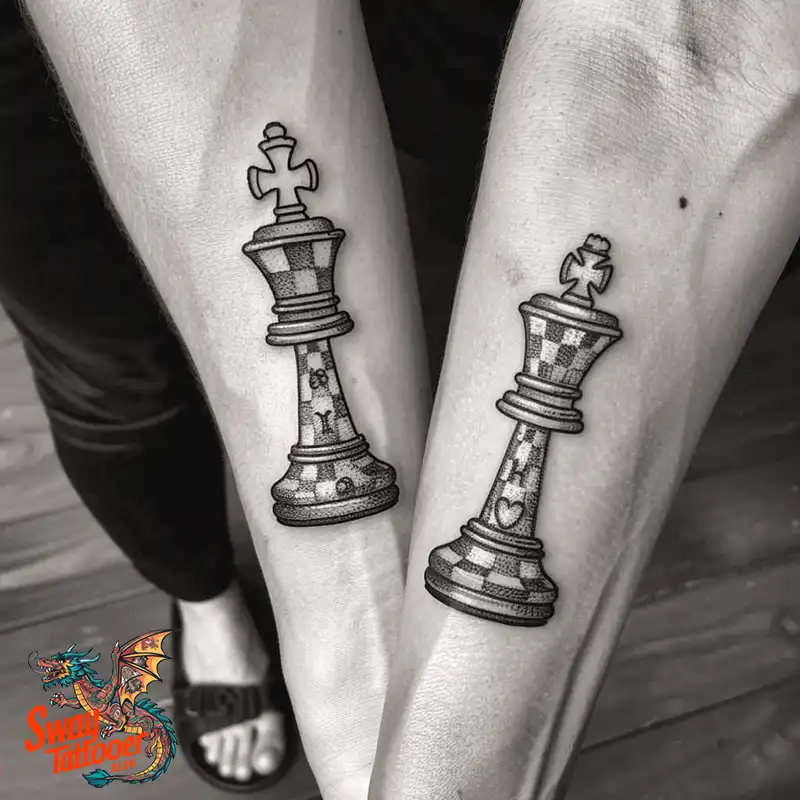
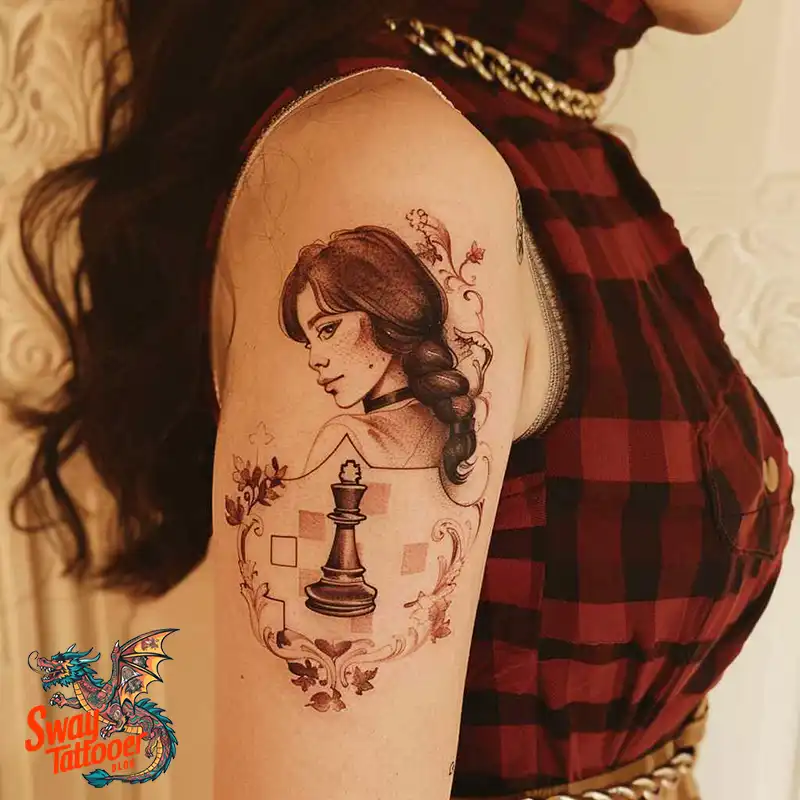
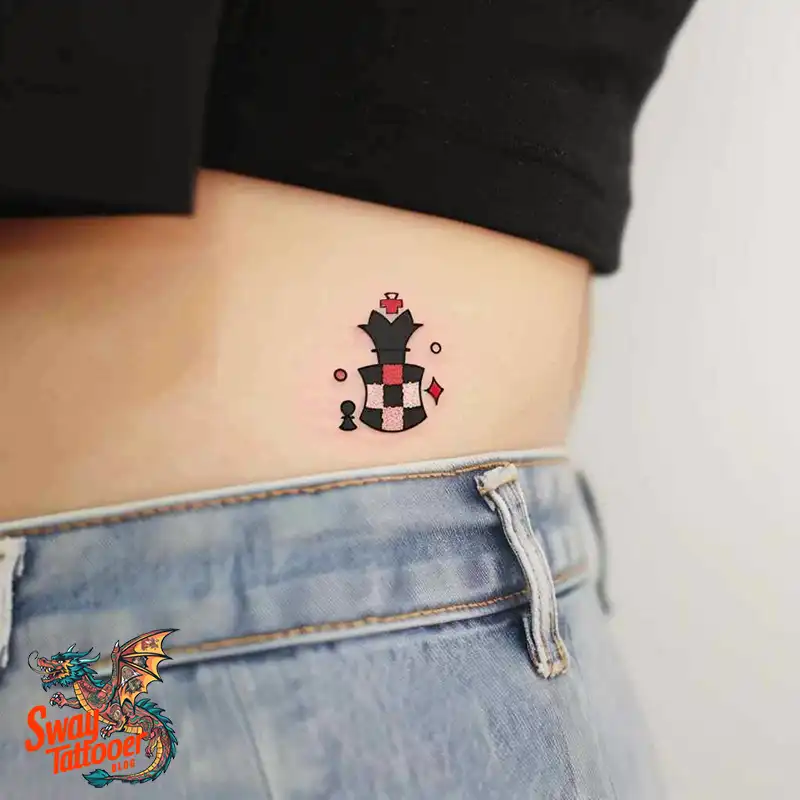
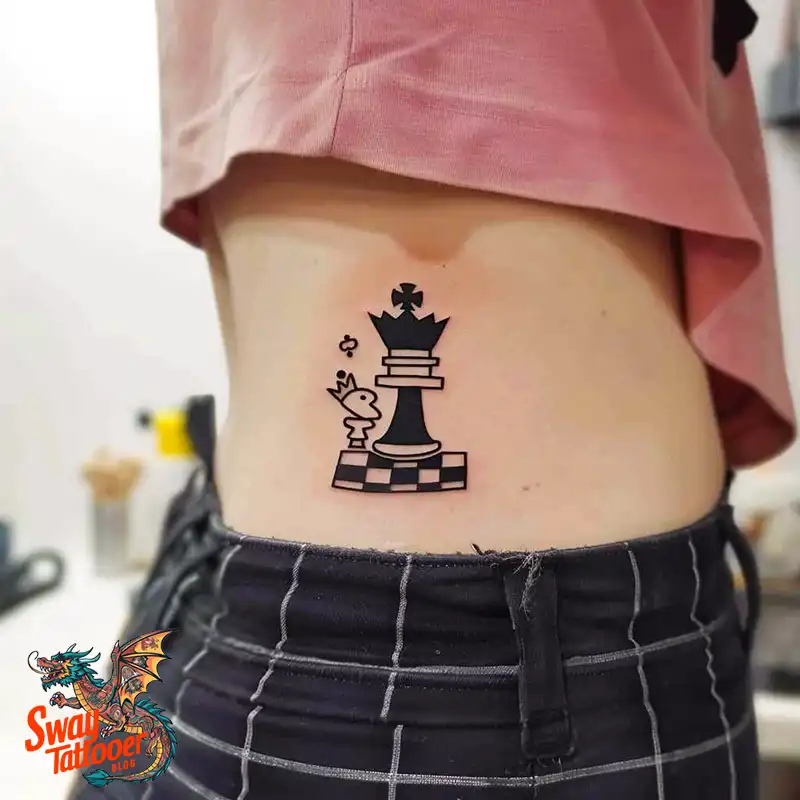
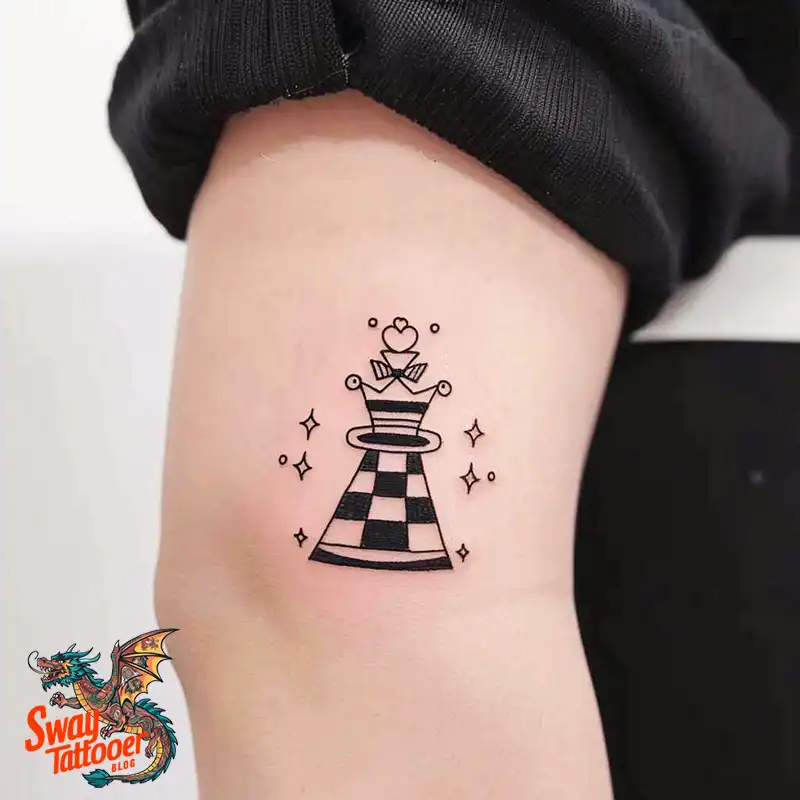
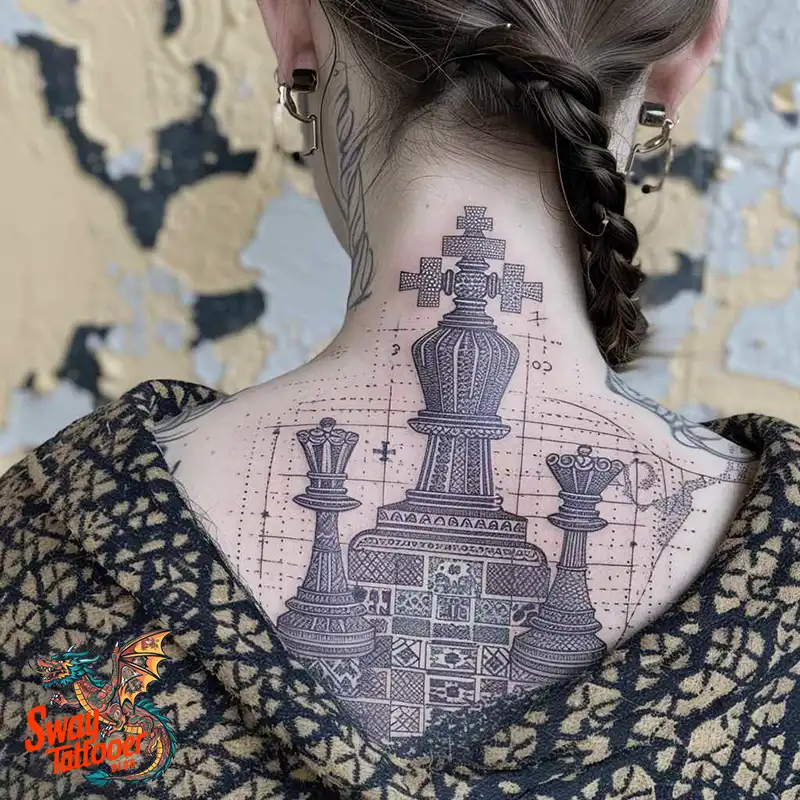
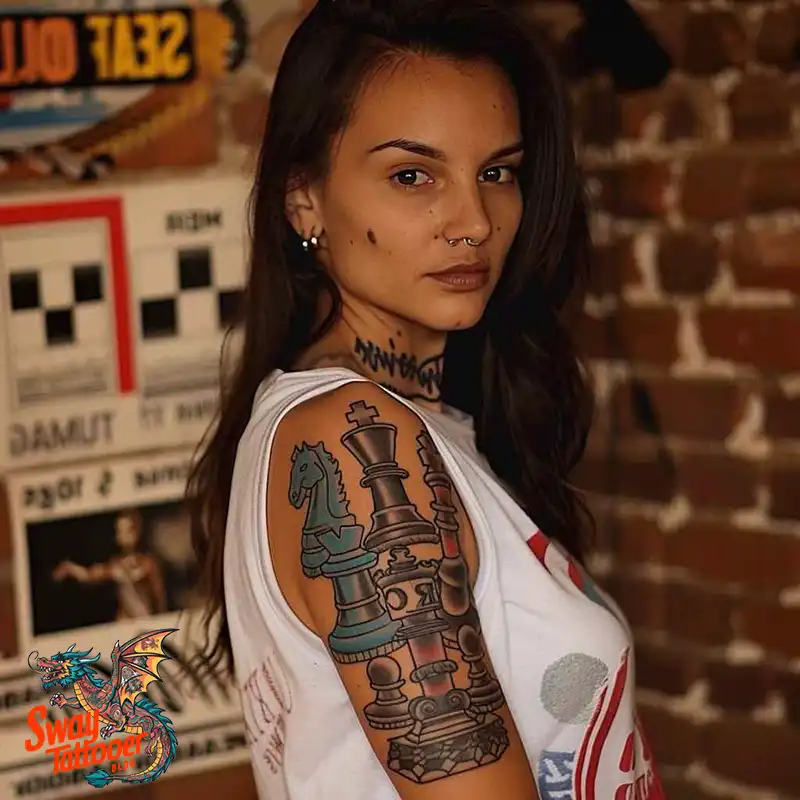
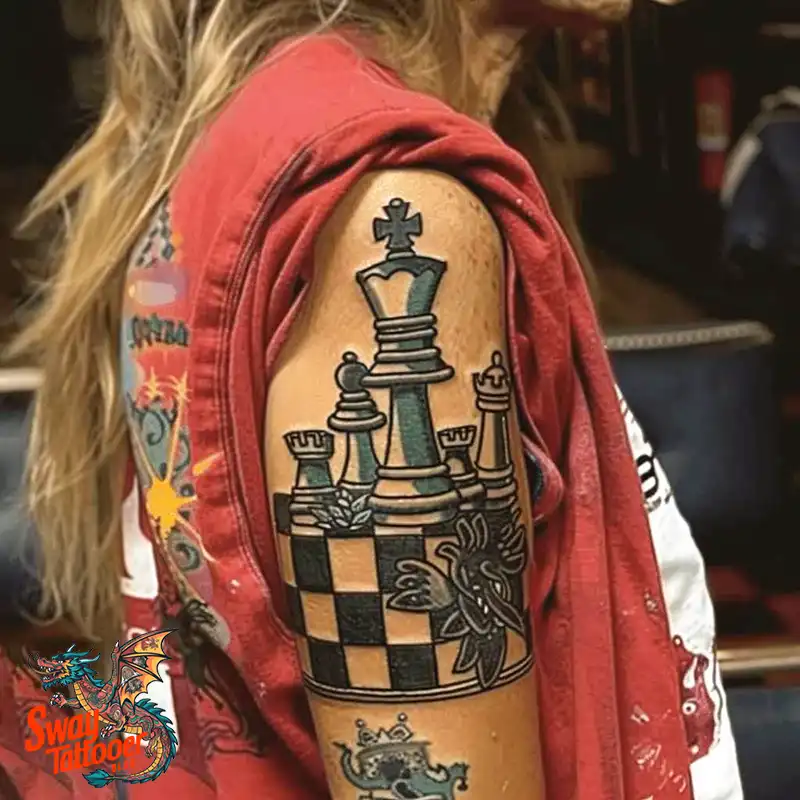
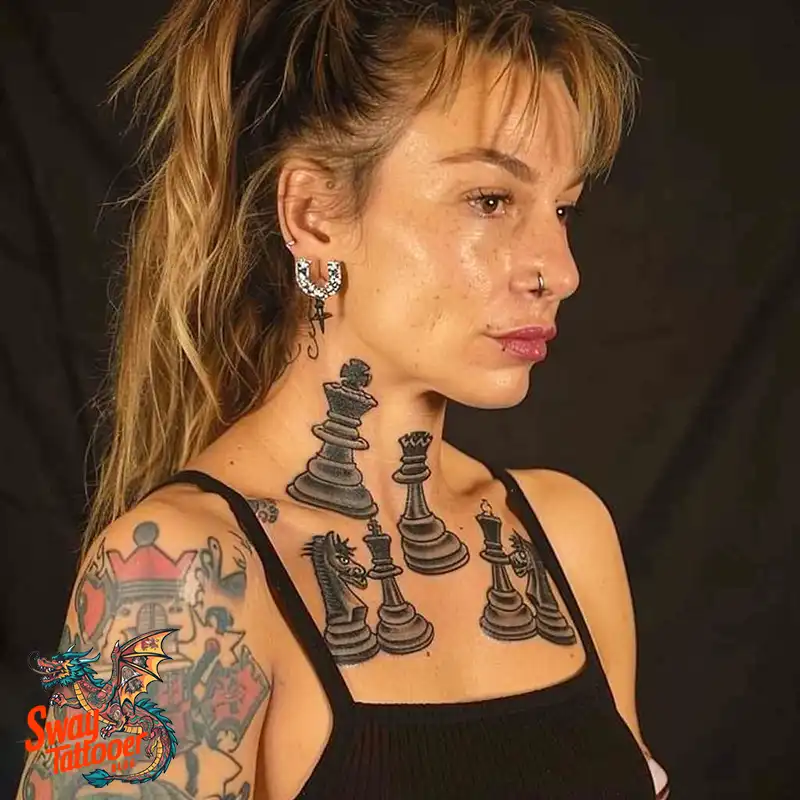
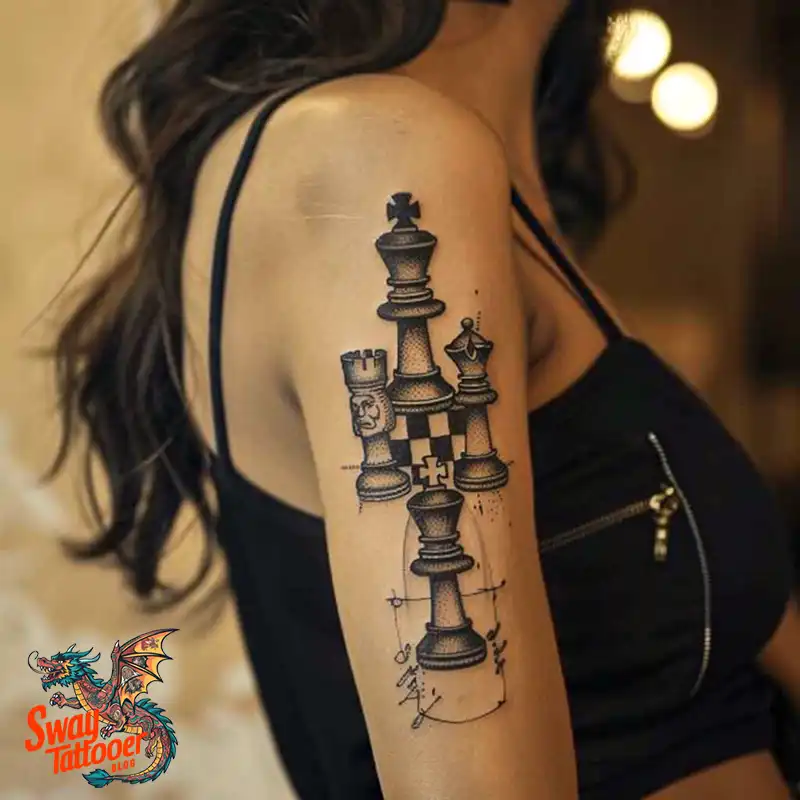
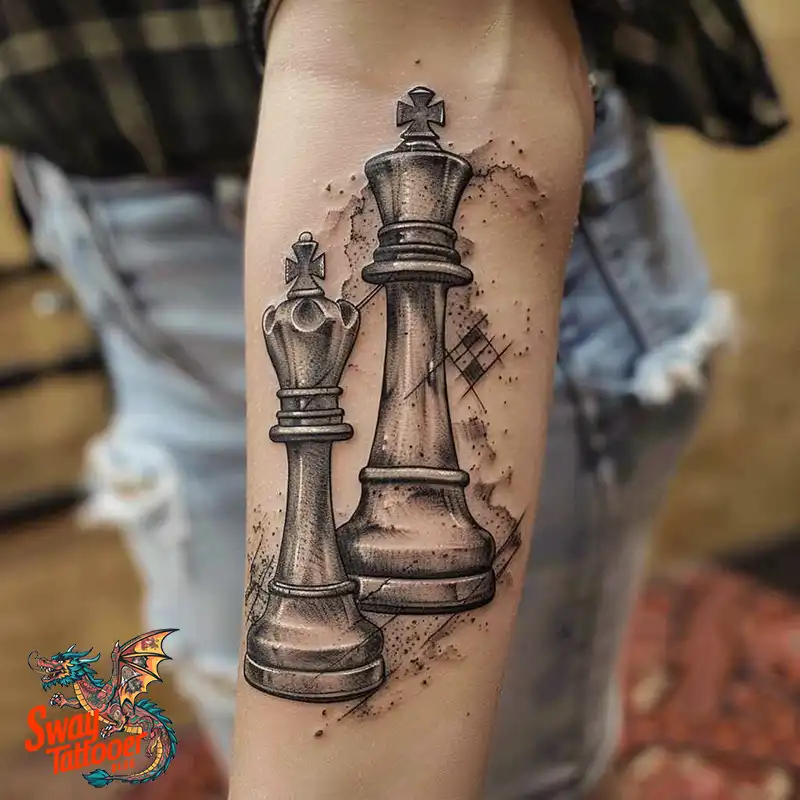
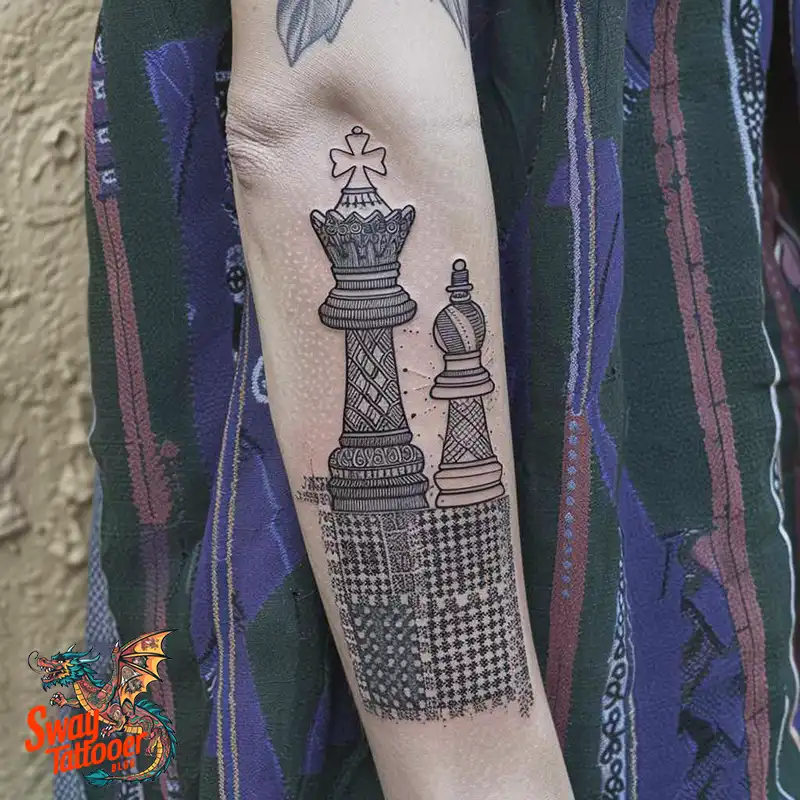
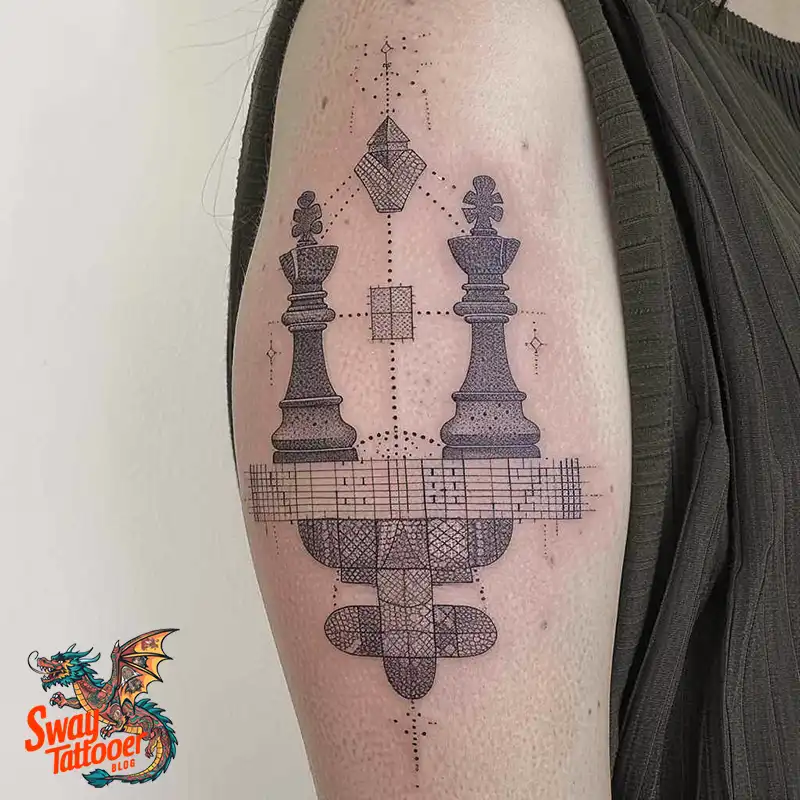
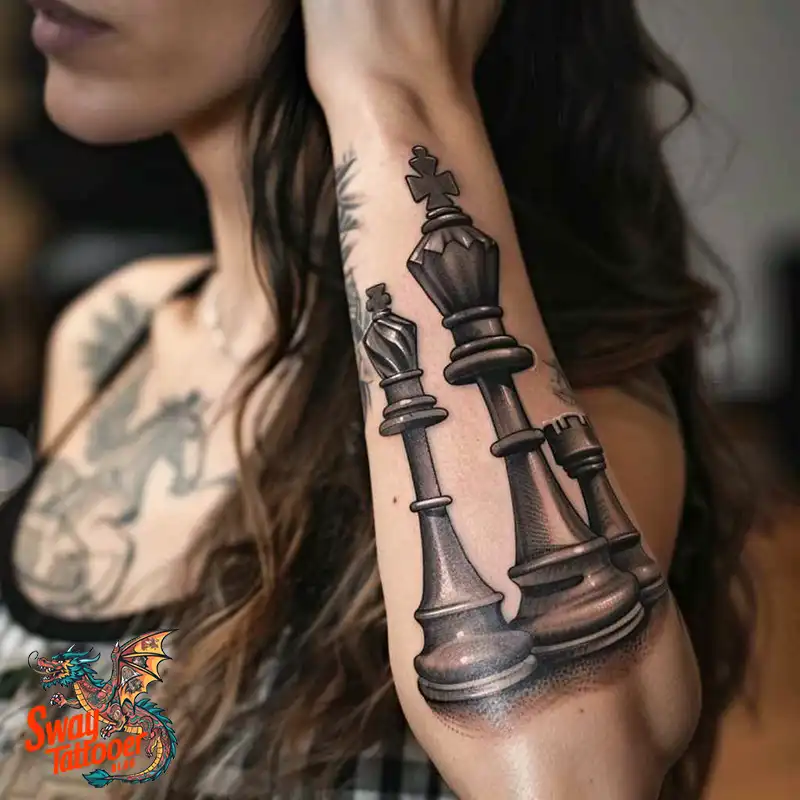
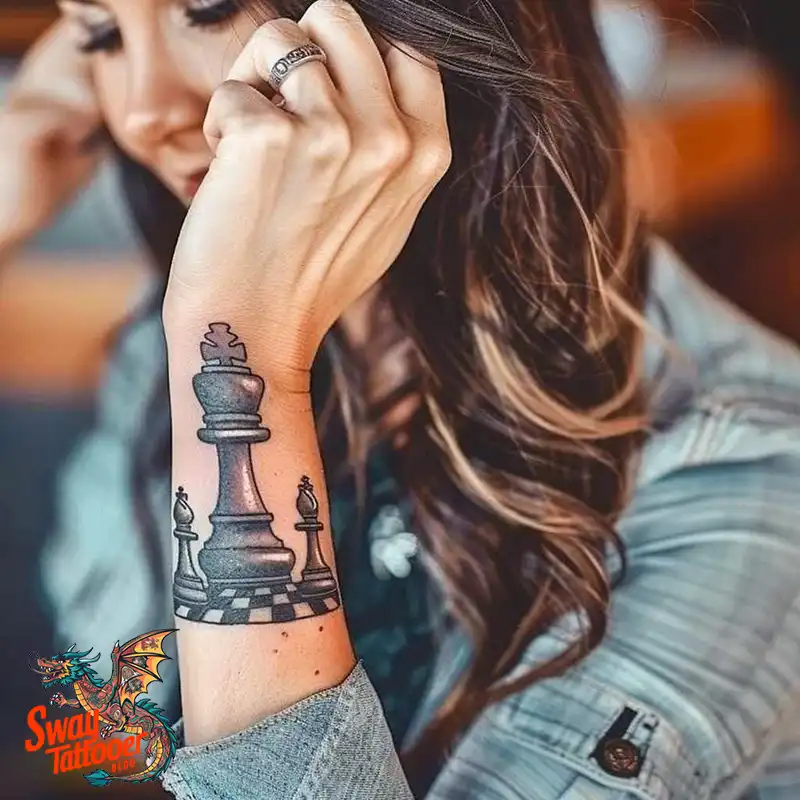
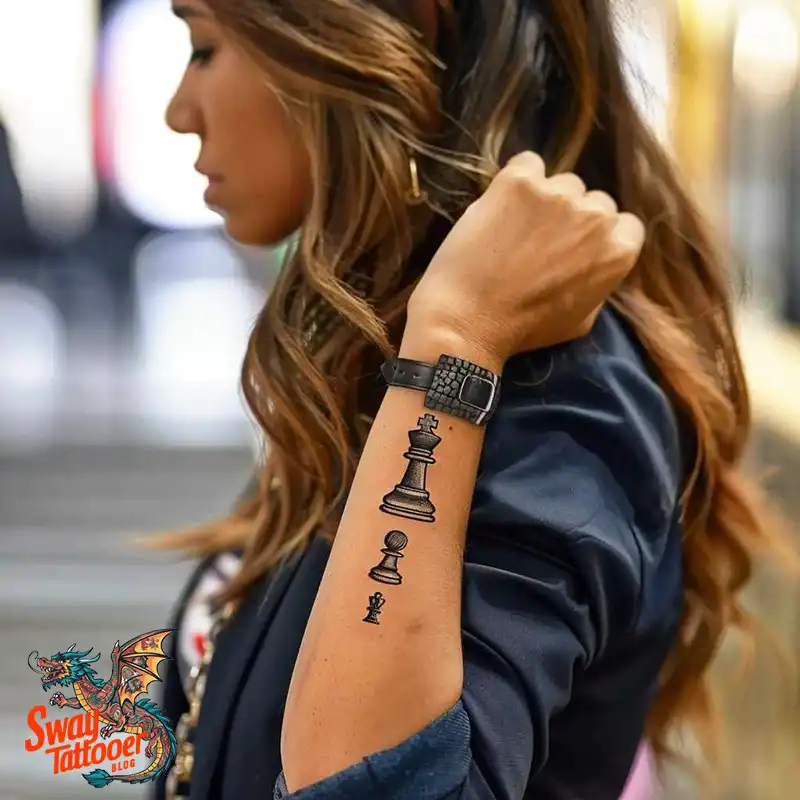
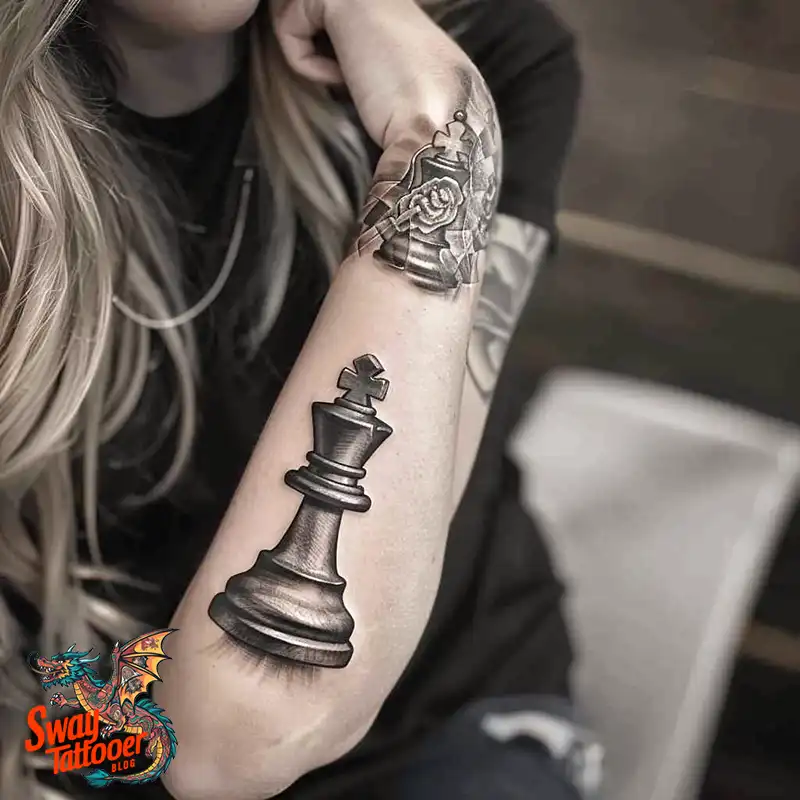
Design Ideas: From Small to Epic
Here are five popular chess tattoo designs, written clearly and simply. Each one has a short description, what it can mean, style ideas, placement tips, and a quick note for your artist.
1. The Queen Piece Tattoo
A lone queen is a bold and elegant choice. The queen is the strongest piece on the board.
Meaning: It often stands for power, independence, and self-worth. Many people get it to show confidence.
Style ideas: Go simple with a clean black outline. Or choose realistic shading for a 3D look. Watercolor behind the piece adds soft color.
Placement: Forearm, collarbone, or behind the ear work well. The forearm lets you show the queen often.
Artist tip: Ask the artist to keep the lines sharp around the crown. Small crowns need fine needles.
2. King and Queen Pair (Couple Tattoo)
This design shows a king and queen together. It is a popular choice for couples or close friends.
Meaning: It can mean partnership, loyalty, and shared goals. Some use it to mark a strong relationship.
Style ideas: Matching black silhouettes look classic. Or make one piece detailed and the other simple for contrast. Add initials or a date for a personal touch.
Placement: Try matching spots like both forearms, shoulders, or ankles. Matching placement feels symbolic.
Artist tip: If you want small pieces, keep the crowns simple. For large pieces, add texture and tiny details.
3. Pawn Row or Single Pawn Tattoo
A pawn can be tiny or part of a line of pawns. A single pawn can also show a big idea.
Meaning: Pawns are about growth, hard work, and quiet strength. They can mean “small but mighty.” A row of pawns can mean teamwork.
Style ideas: Minimal dots or tiny outlines keep it subtle. Realistic pawns with a shadow make them dramatic. A pawn turning into a queen shows progress and hope.
Placement: Fingers, wrist, or ribcage for small pawns. A line of pawns fits the side of the forearm or along the ribs.
Artist tip: Finger tattoos fade faster. Ask about needle size and touch-up plans.
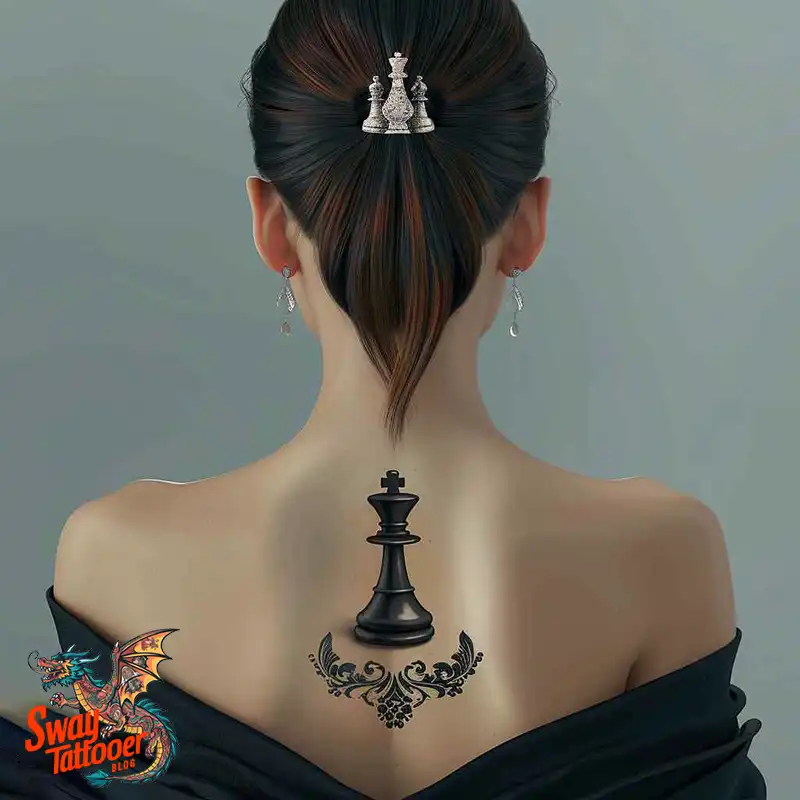
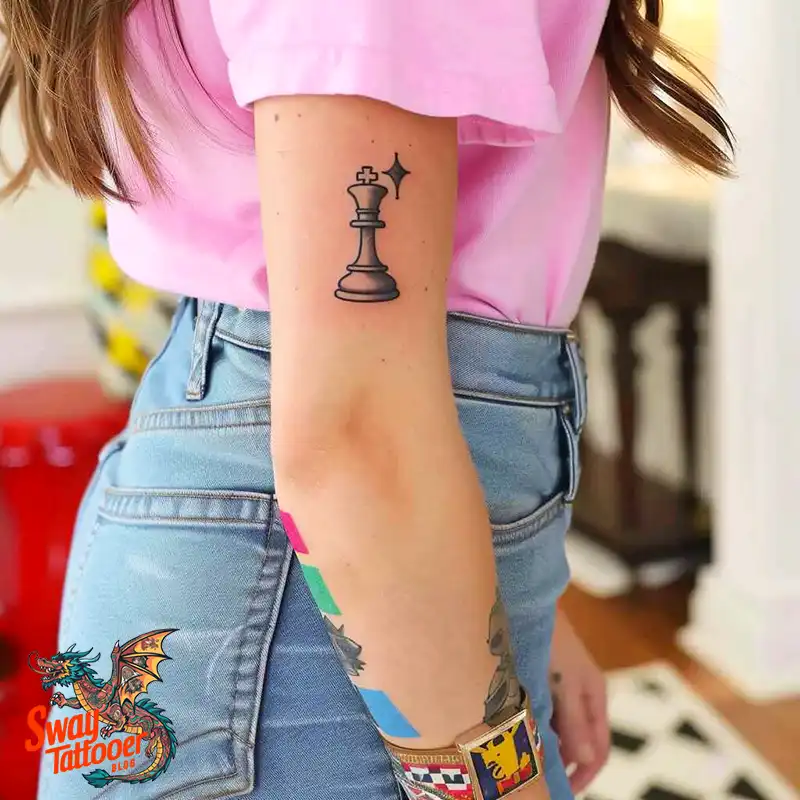
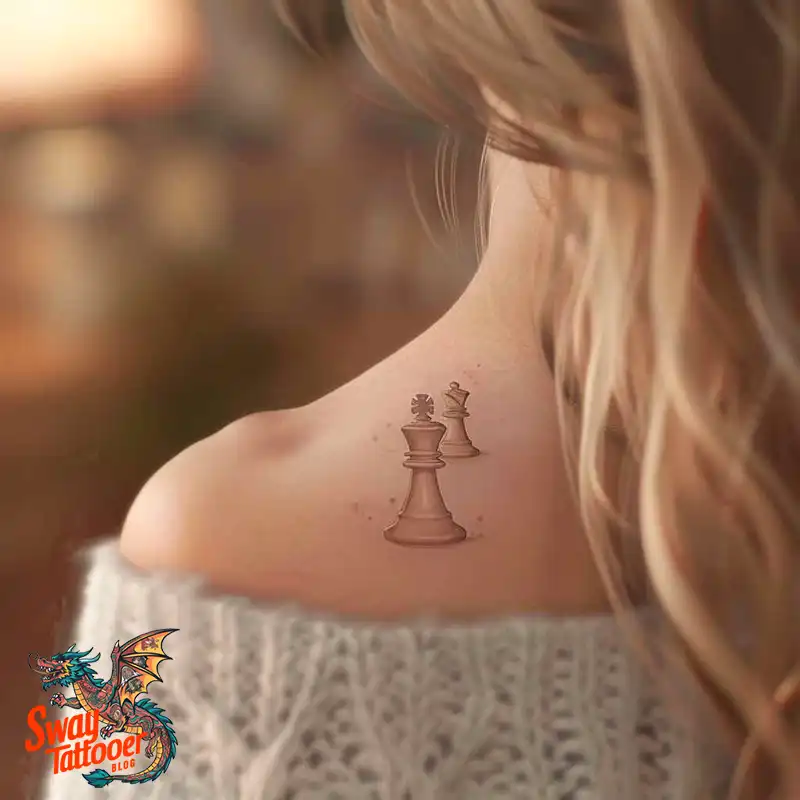
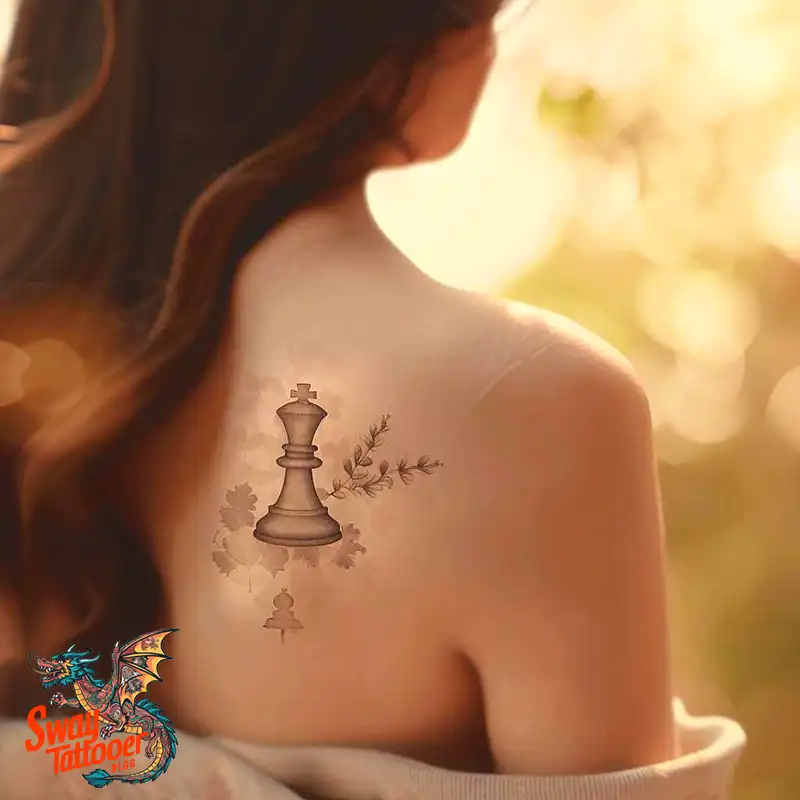
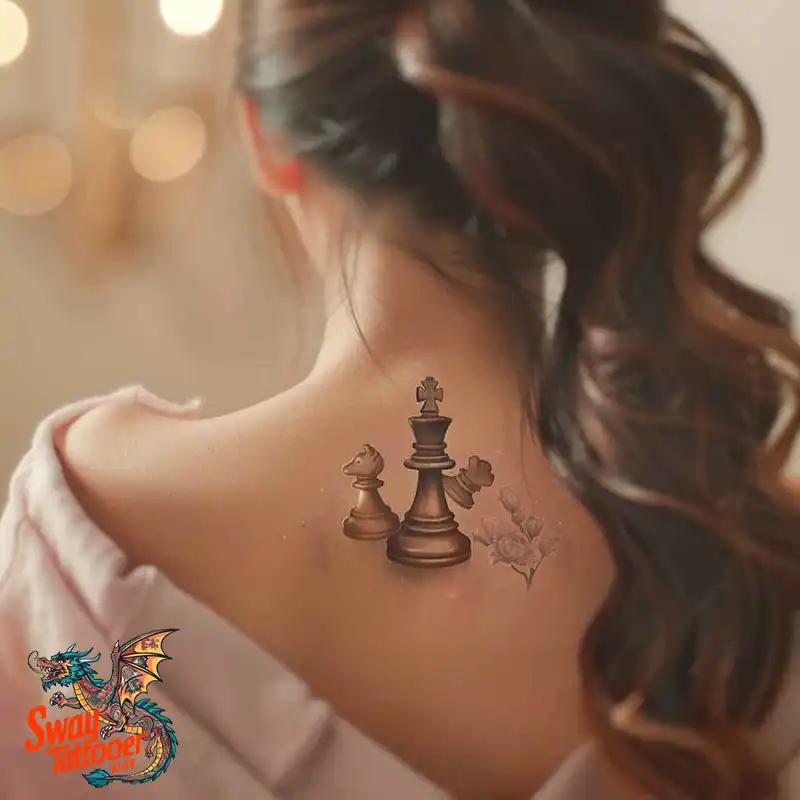
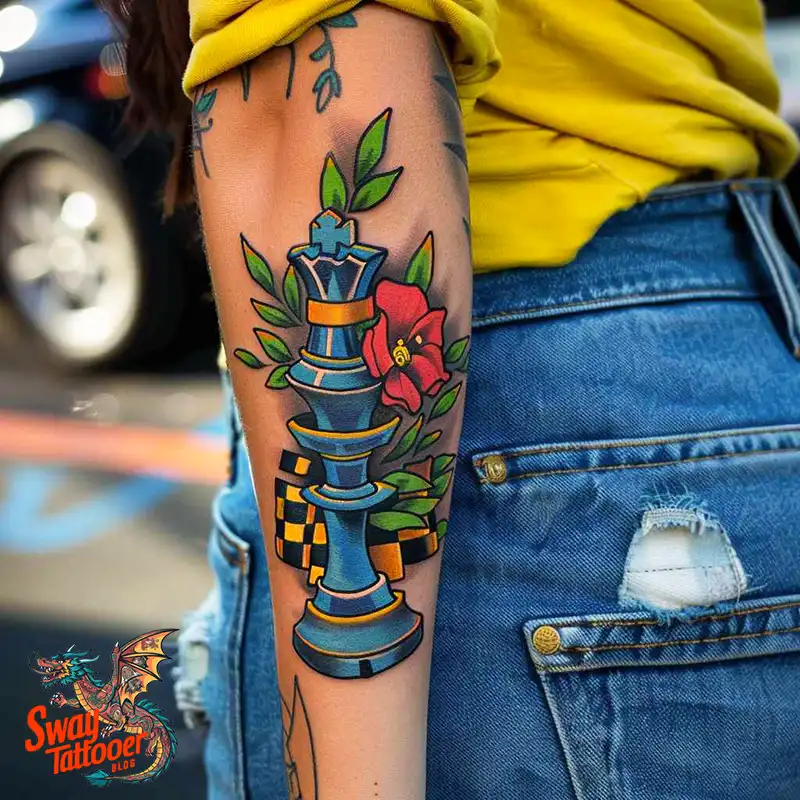
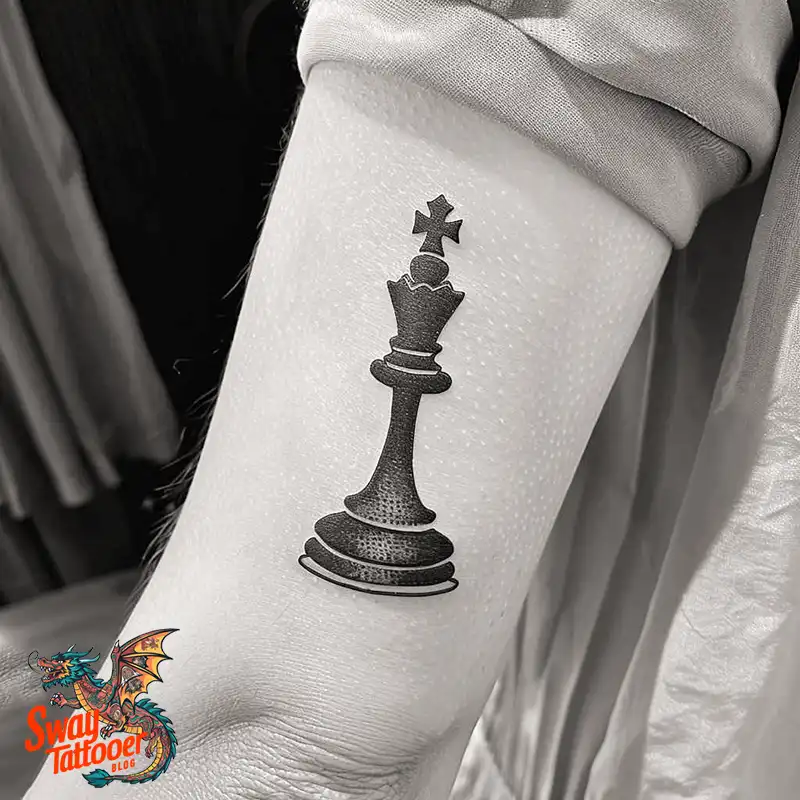
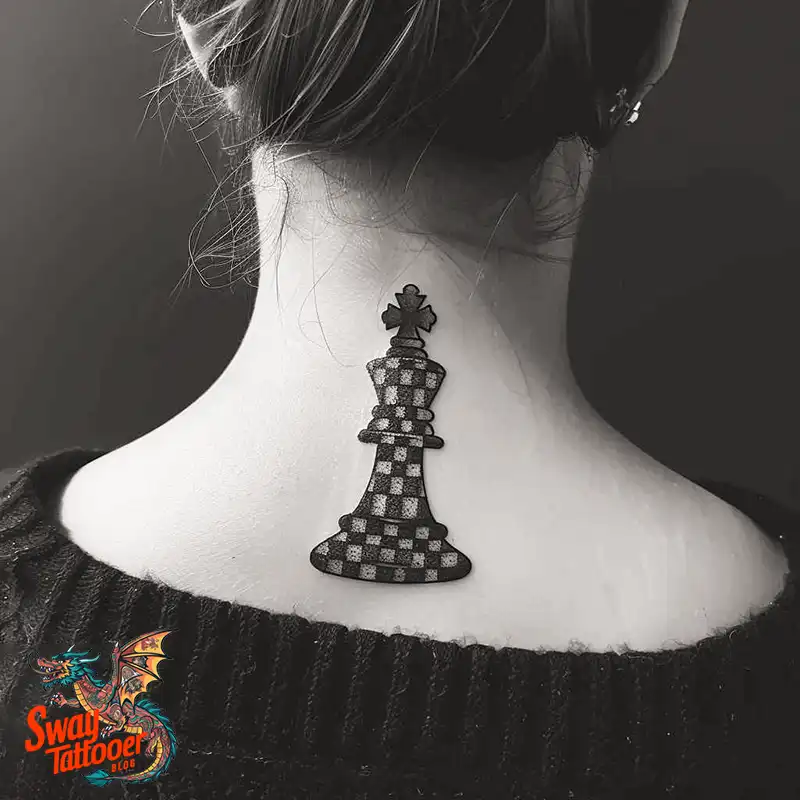
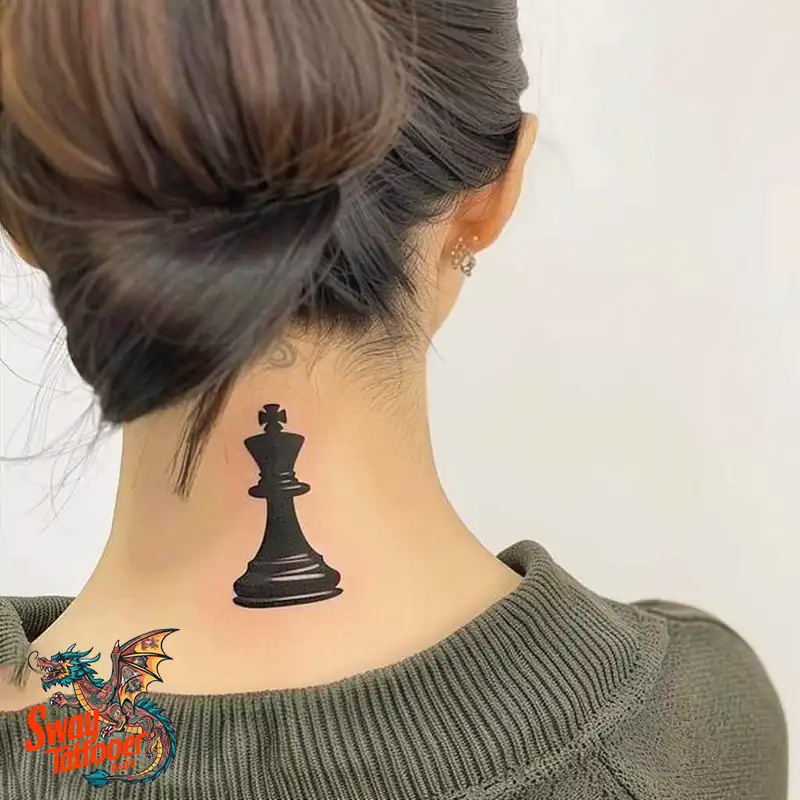
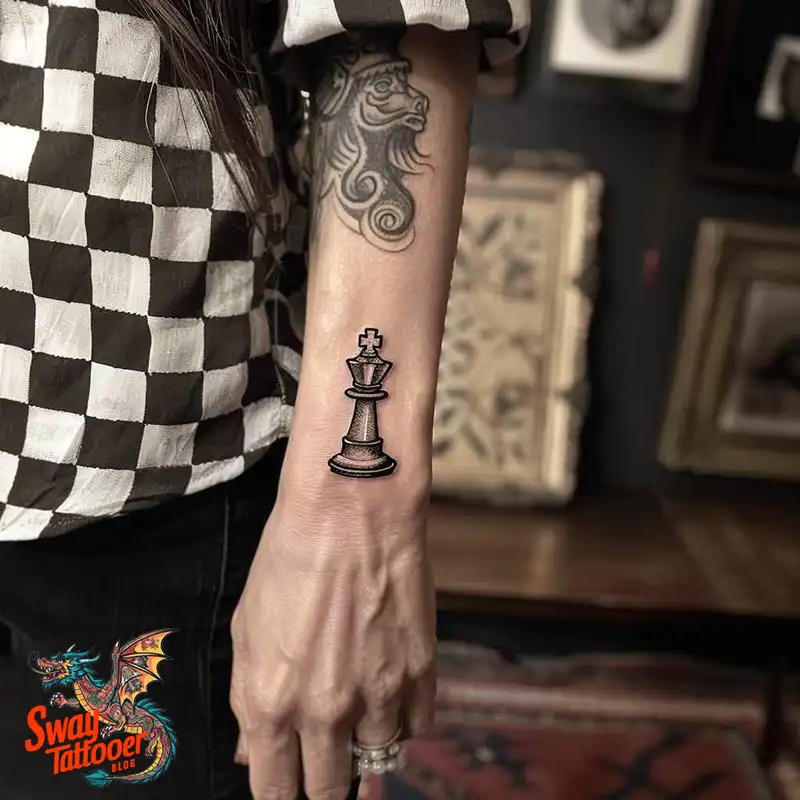
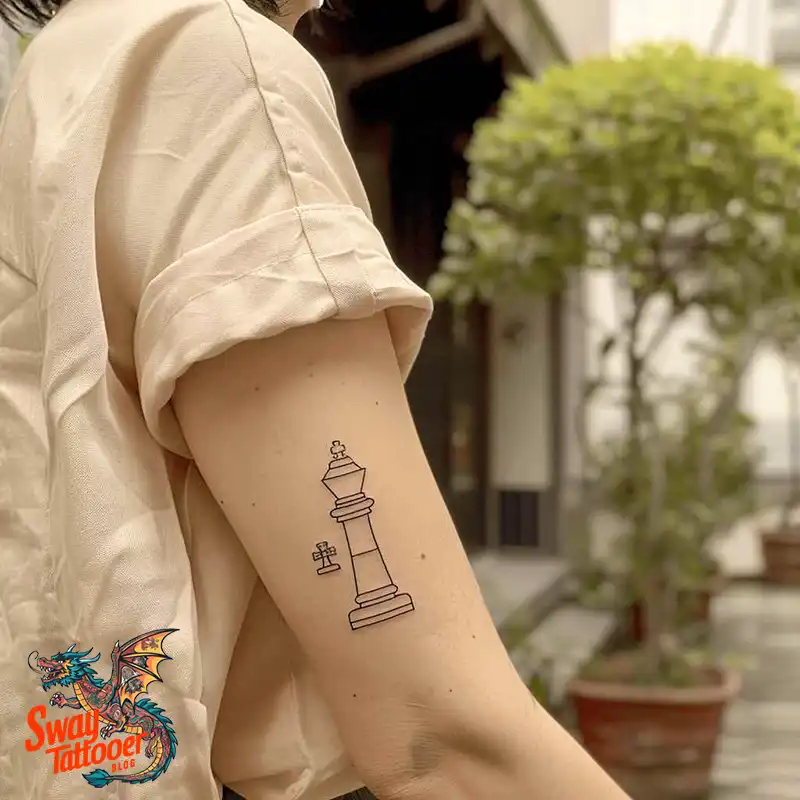
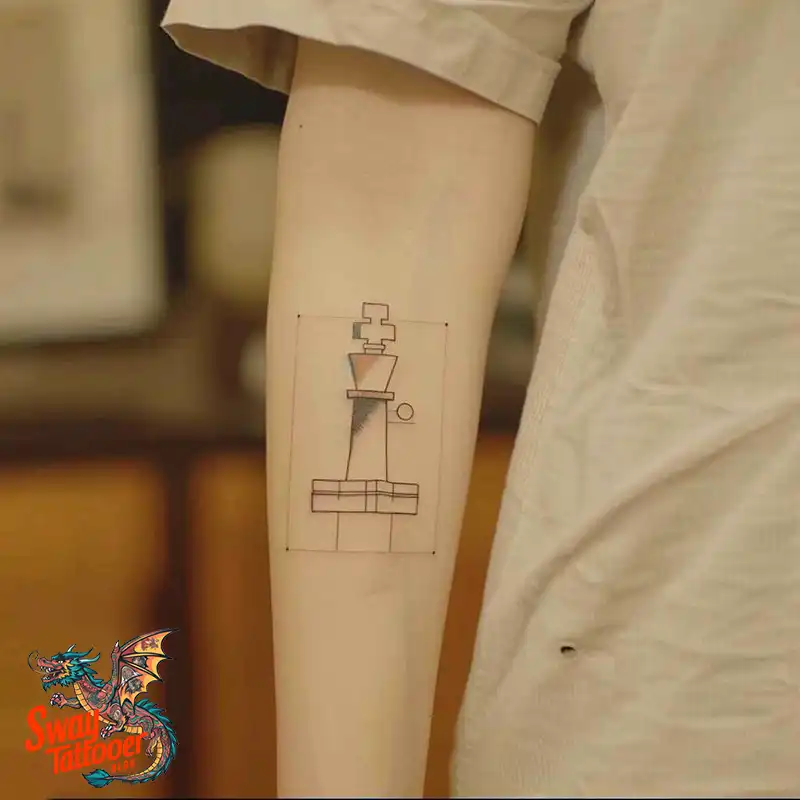
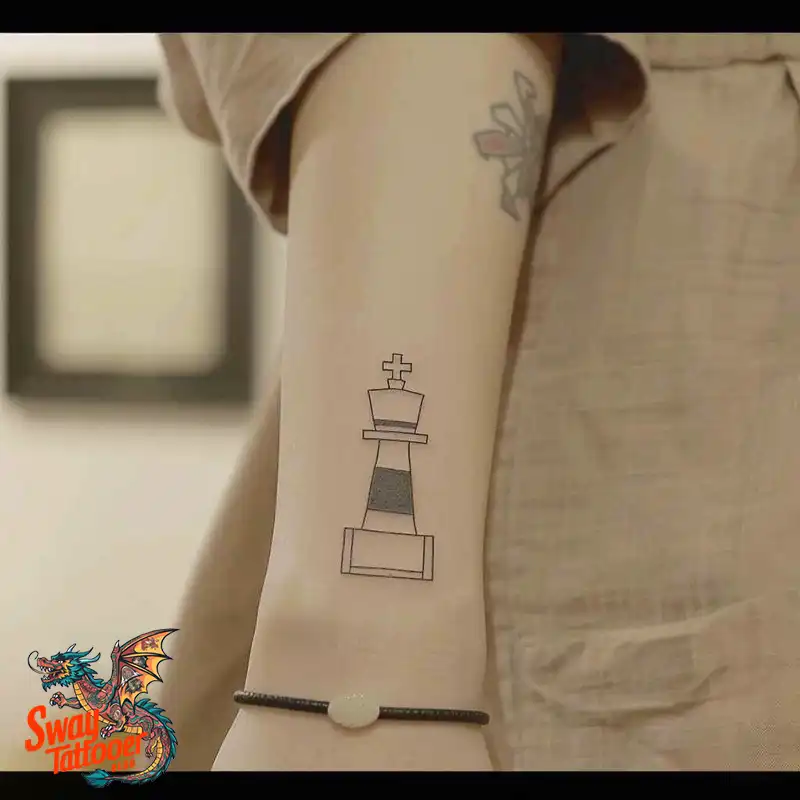
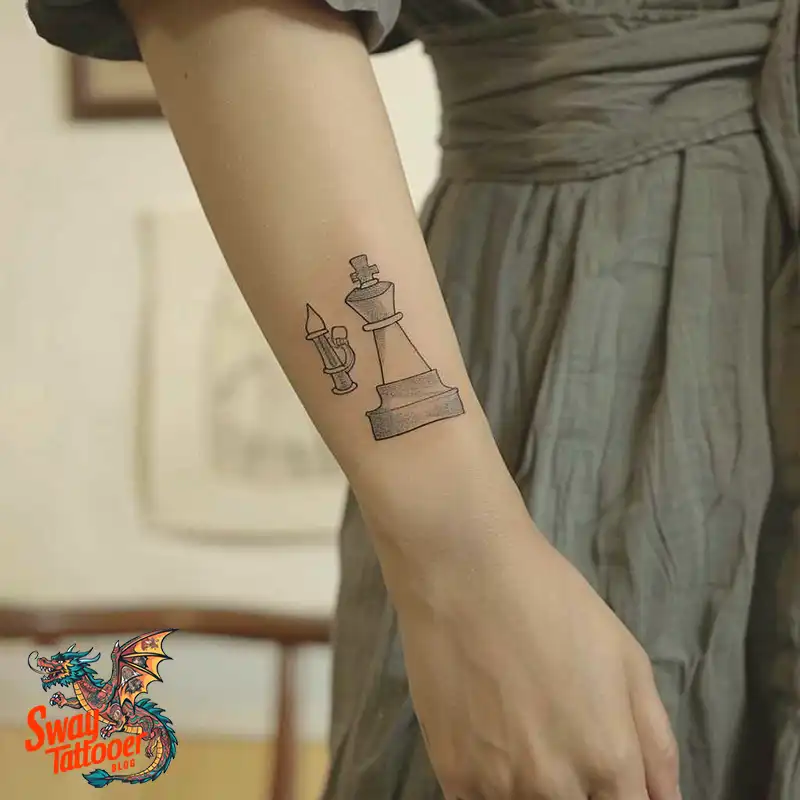
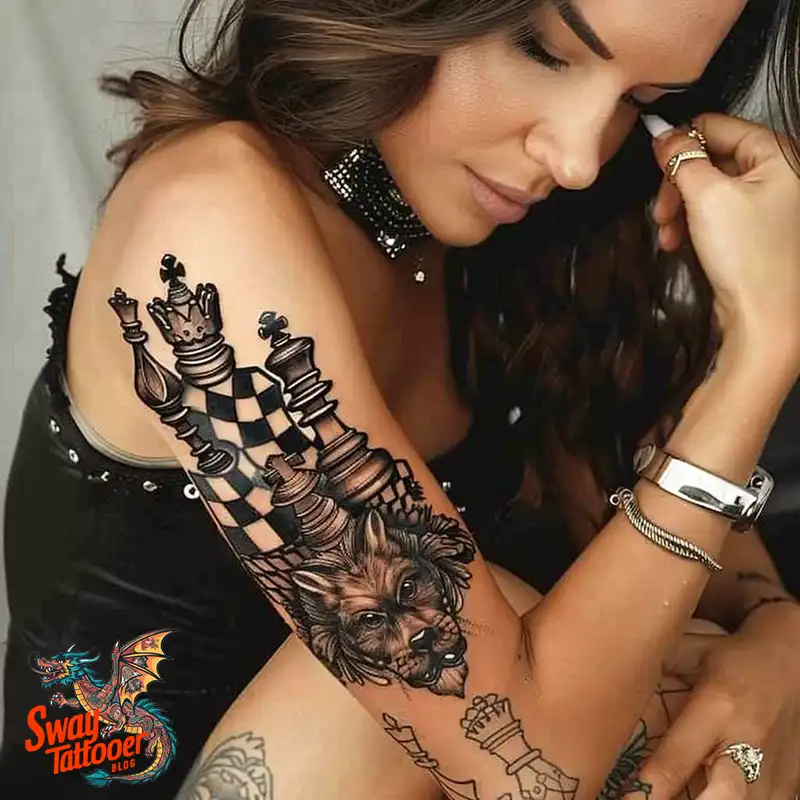
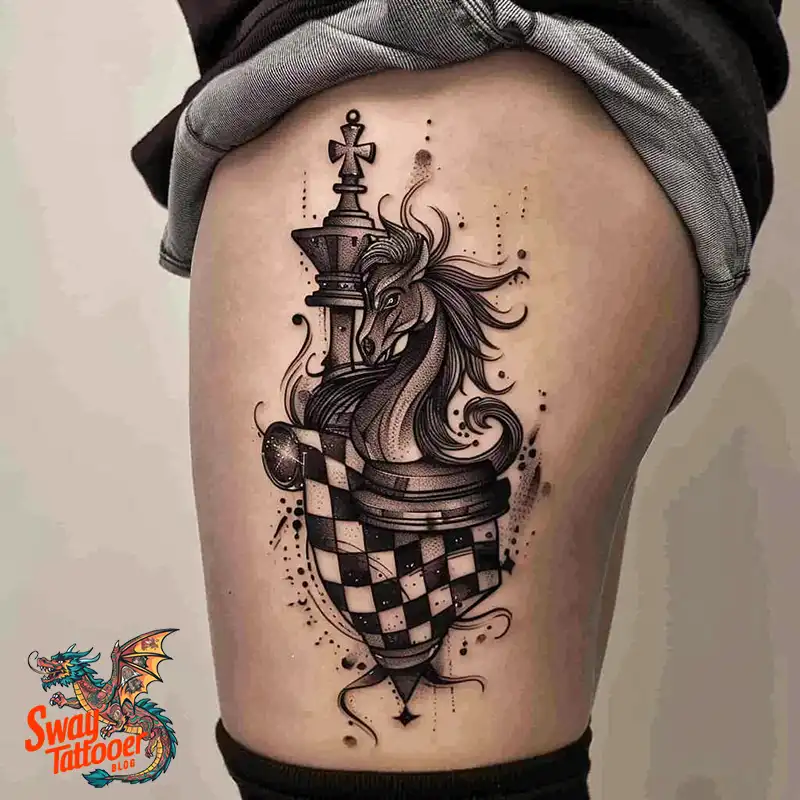
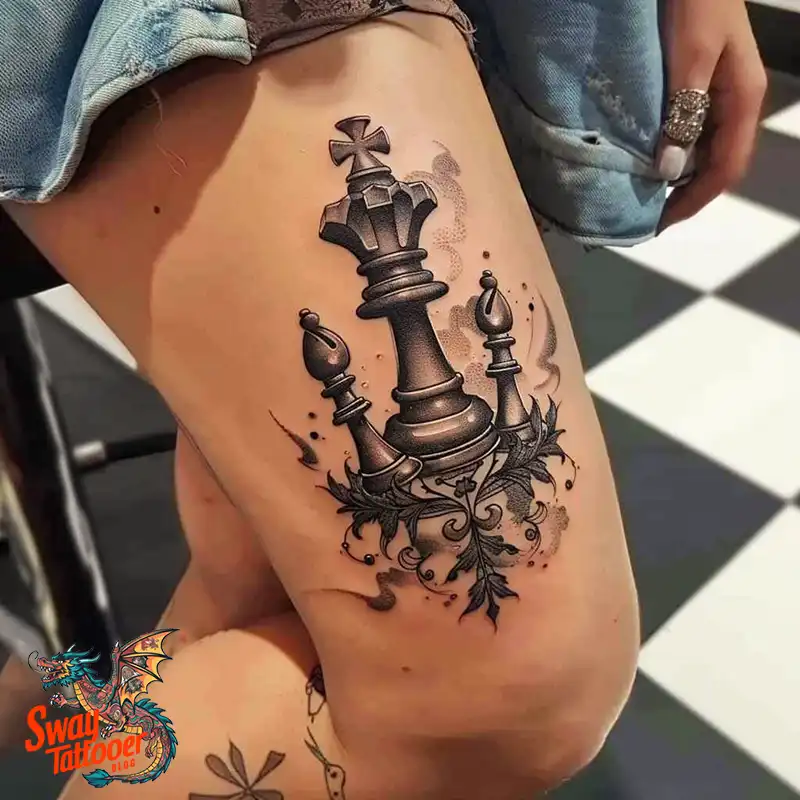
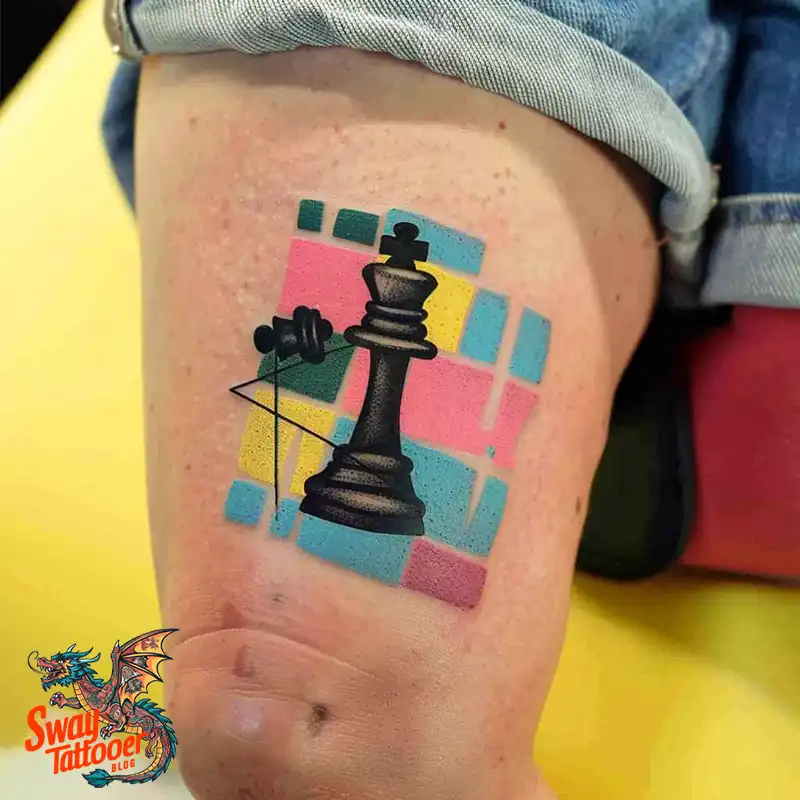
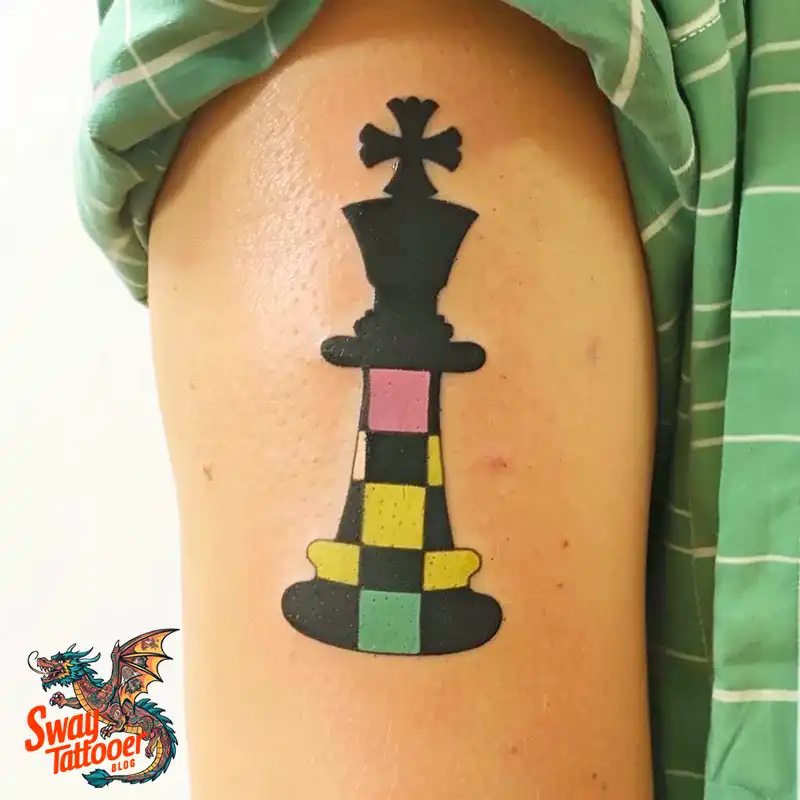
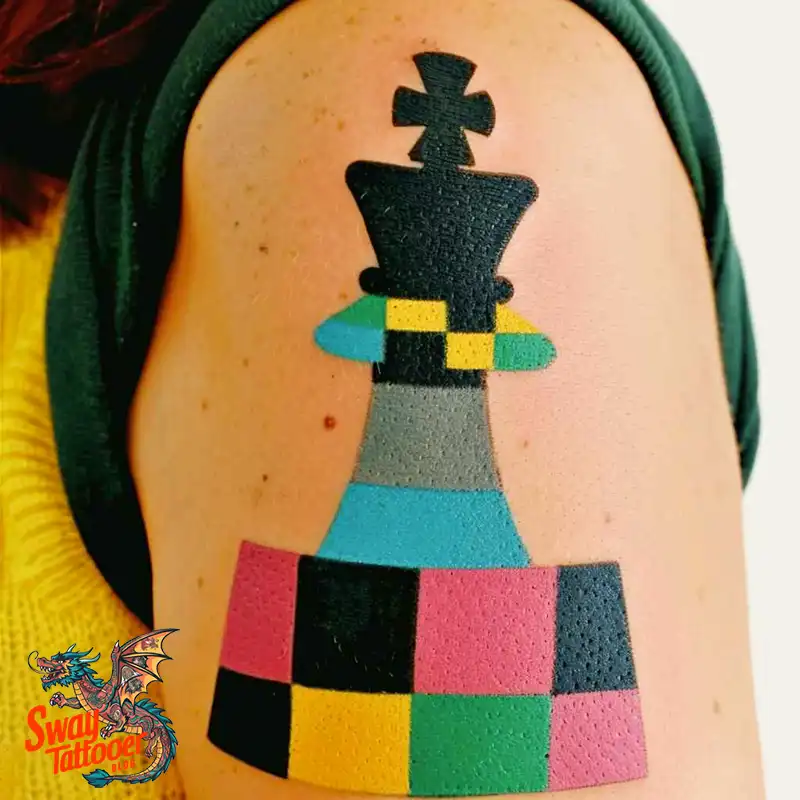
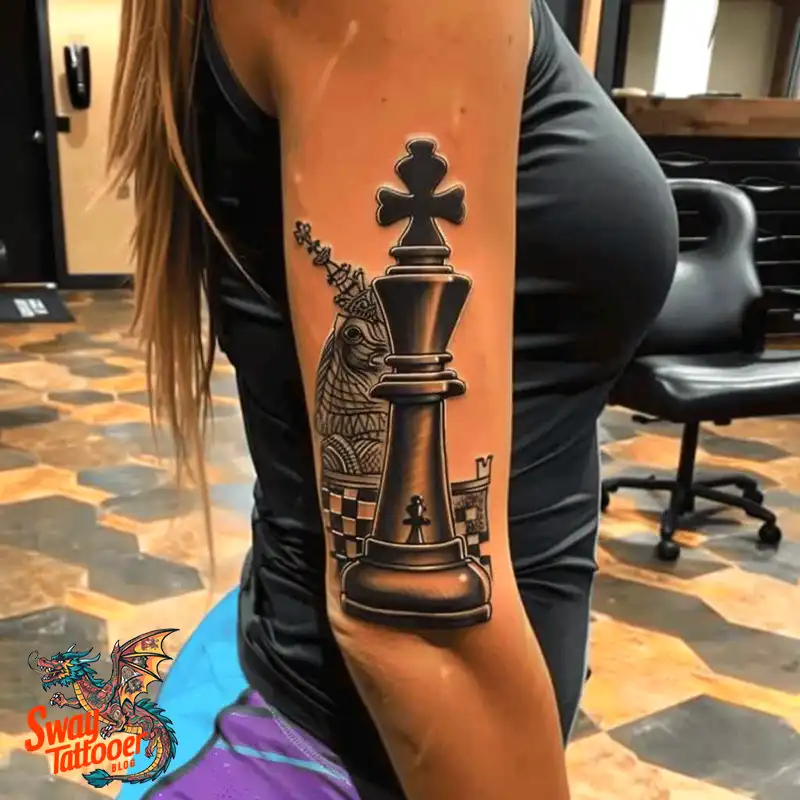

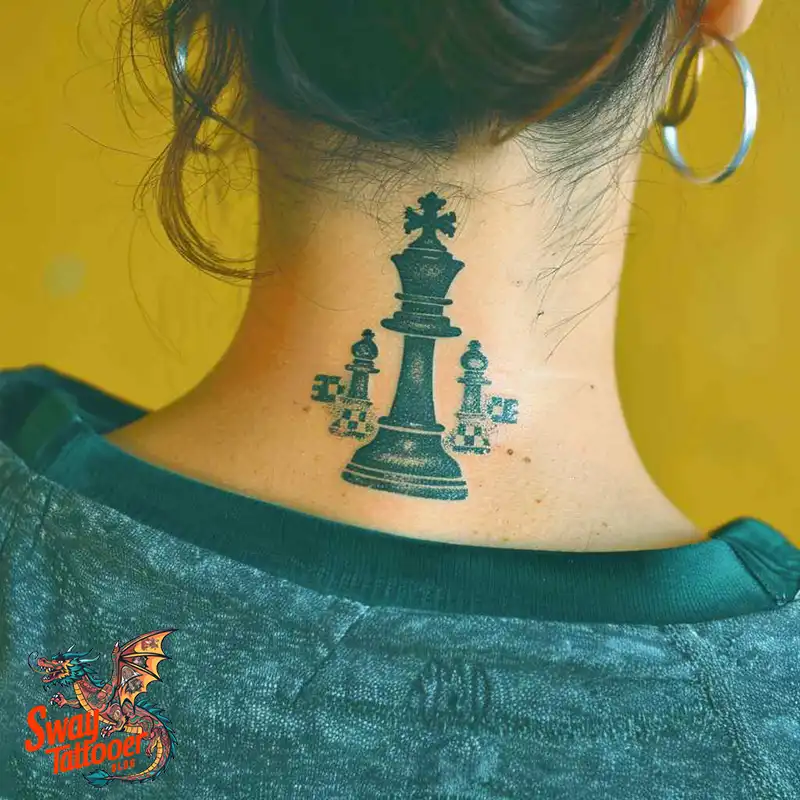
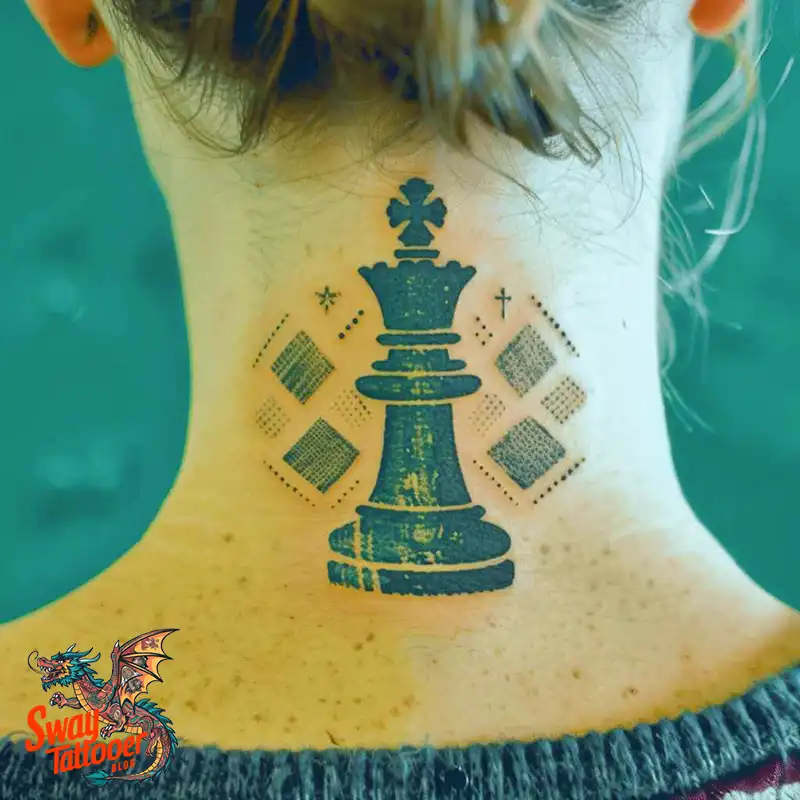
4. Knight (Horse) Tattoo
The knight looks like a horse’s head. It is one of the most artistic chess pieces.
Meaning: The knight stands for clever moves, surprise, and creative problem solving. It can mean “think different.”
Style ideas: Carved wood realism makes it feel old and noble. Geometric lines give a modern twist. Add motion lines to show the knight “jumping” over pieces.
Placement: The Upper arm, calf, or chest are good places for detail. A small knight fits nicely on the wrist.
Artist tip: For realism, the artist needs good shading skills. For geometric styles, look for clean, even lines.
5. Full Board or Checkmate Scene
This is a big, story-style tattoo. It can show a famous game, a checkmate, or a dramatic moment.
Meaning: It can tell a life lesson or mark a turning point. A checkmate can mean victory or a final choice.
Style ideas: Full 3D boards look dramatic. Or use a single row of pieces to tell the story. Add other symbols like clocks, books, or quotes.
Placement: Back, chest, or full sleeve works best. These areas give room for detail and a clear story.
Artist tip: Plan this over several sessions. Bring photos or sketches of the exact board layout you want.
Where to Put a Chess Tattoo
Placement matters. The spot you pick can add meaning to the tattoo.
Ankles and feet work well for small knight tattoos. They hide easily and fit curved designs. The ribs are a great place for a line of pawns. Shoulders suit rooks and strong shapes. The spine is a great canvas for a tall king or queen. Finger tattoos fade faster because of wear and hand use.
Think about how visible you want it to be. Also, think about work or daily life. Ask your artist where the design will age best.
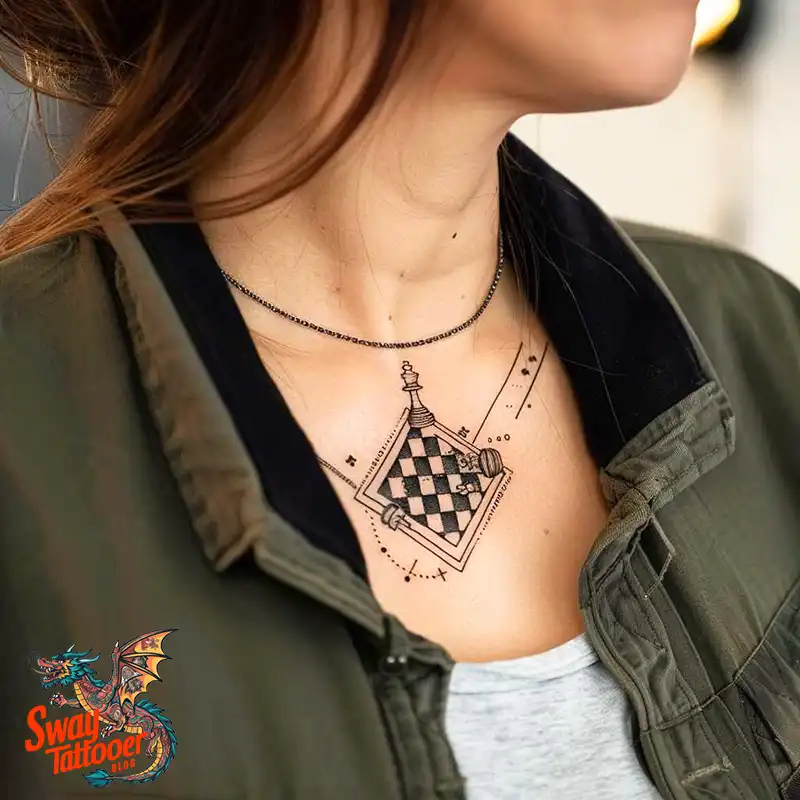
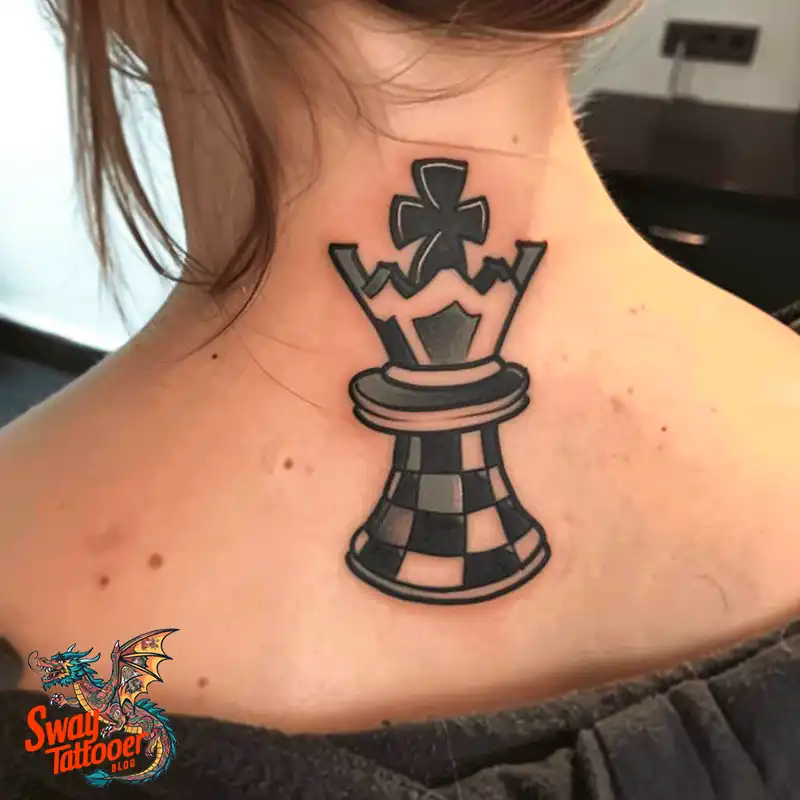
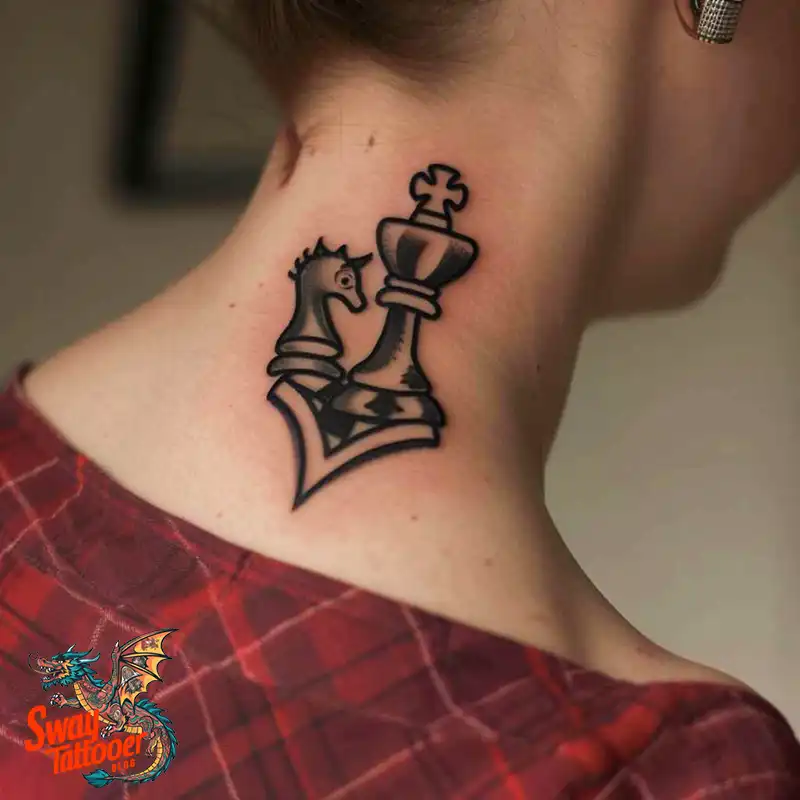

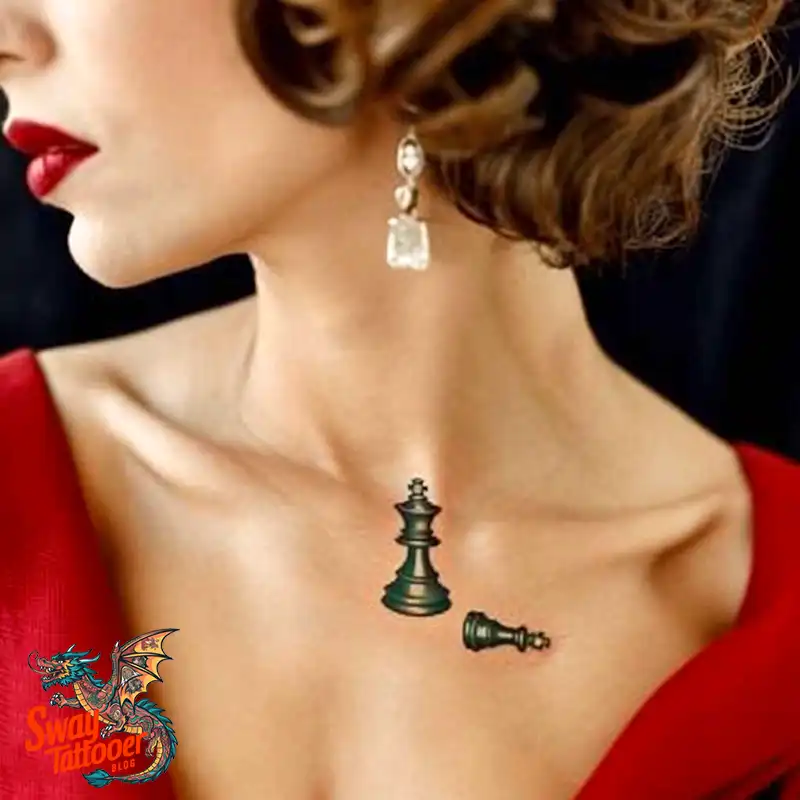
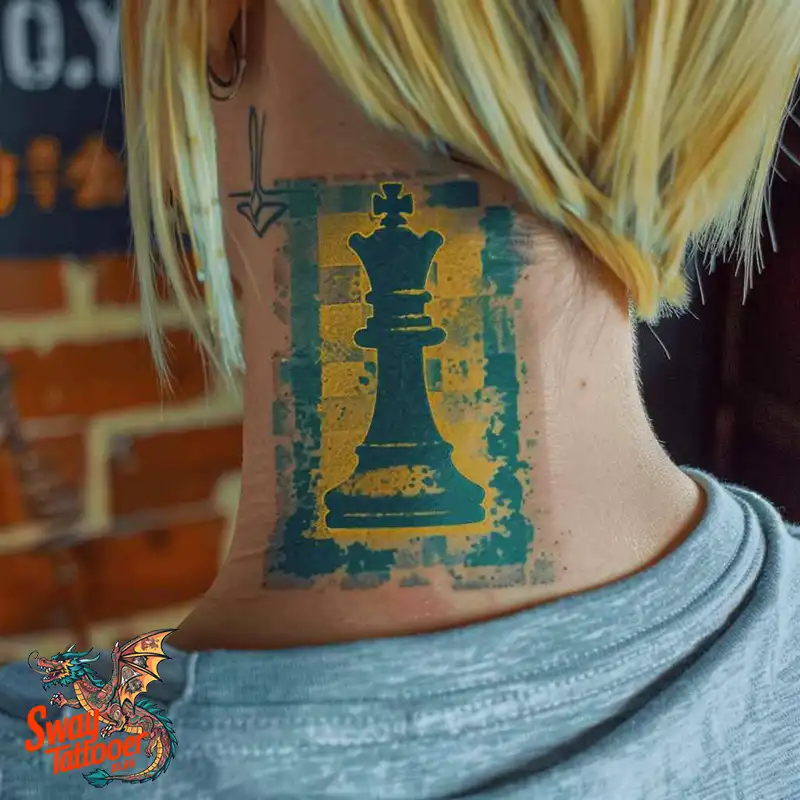
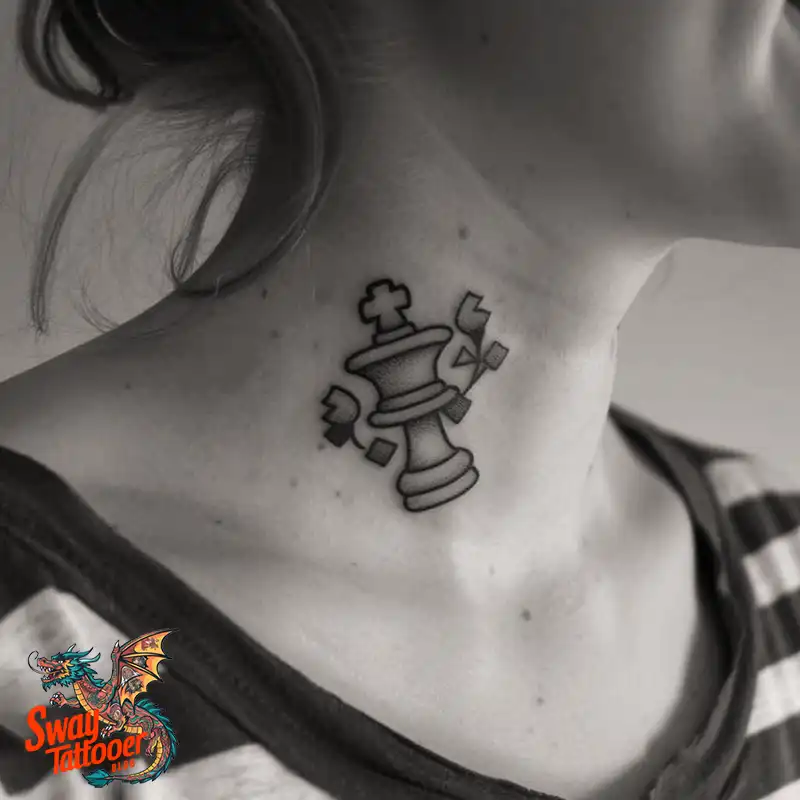
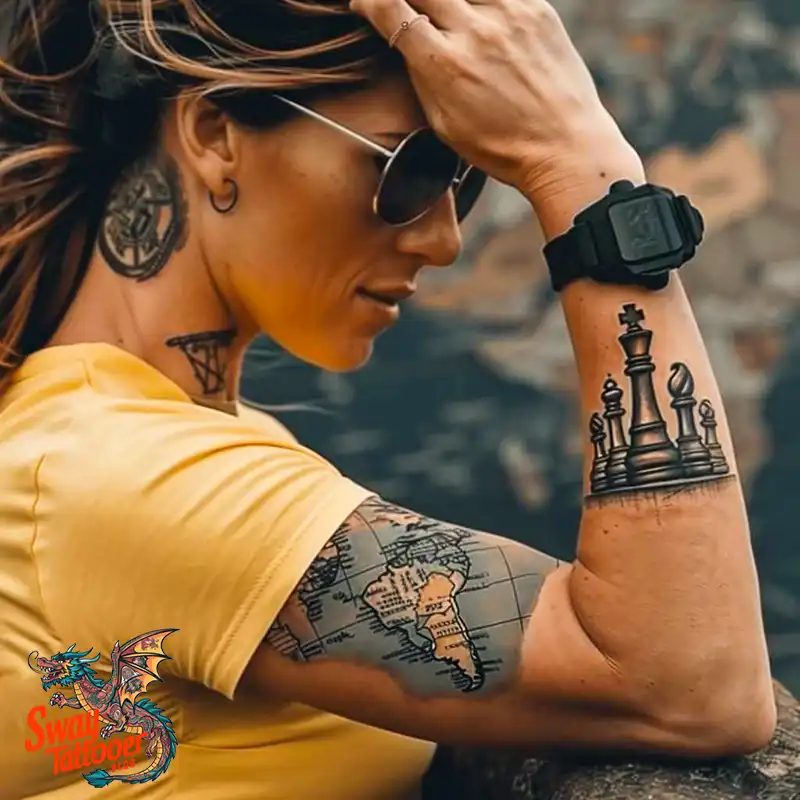
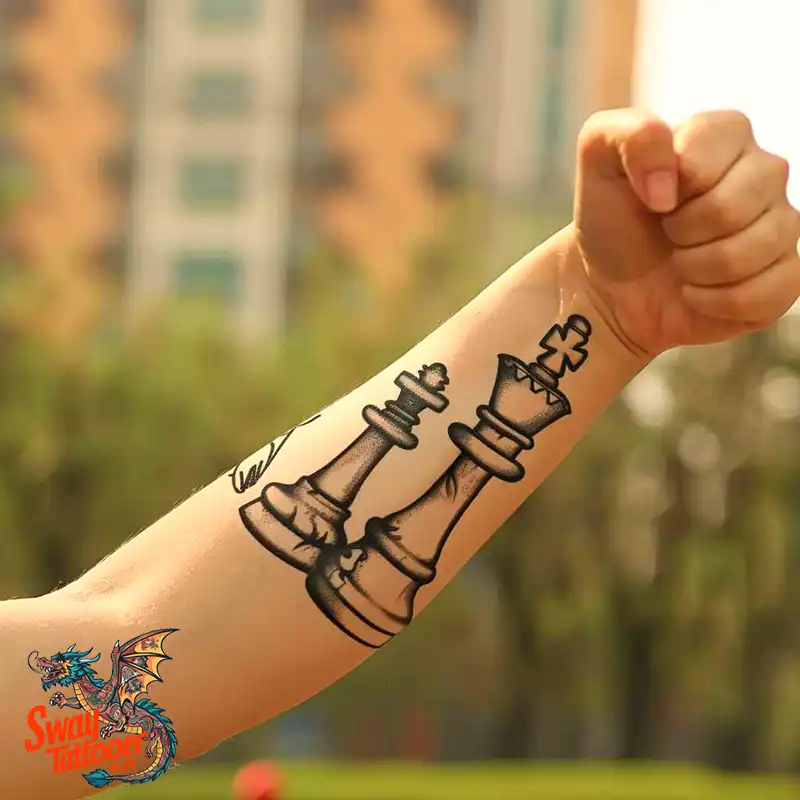
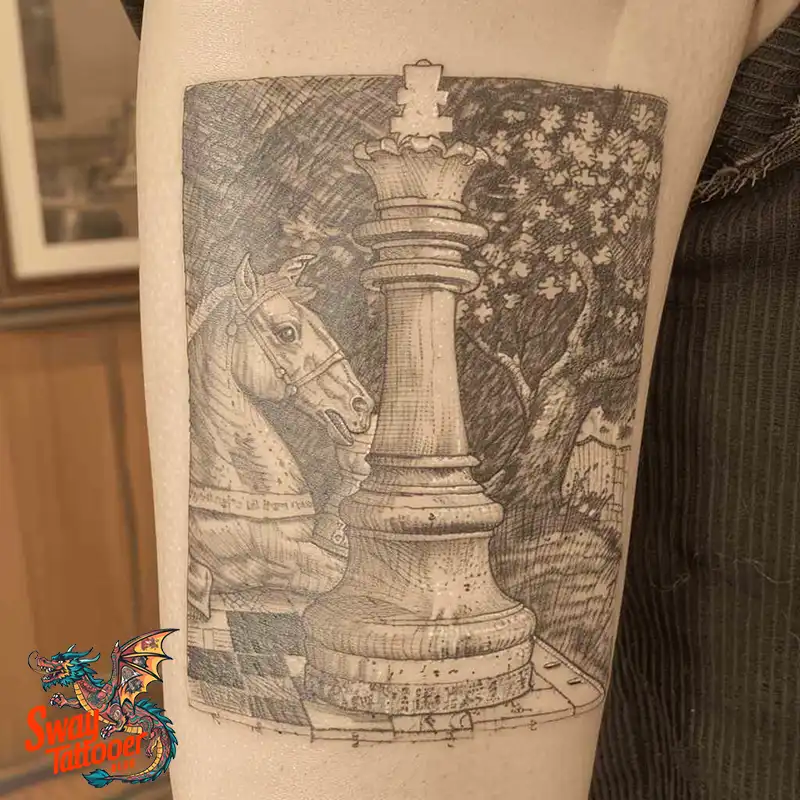
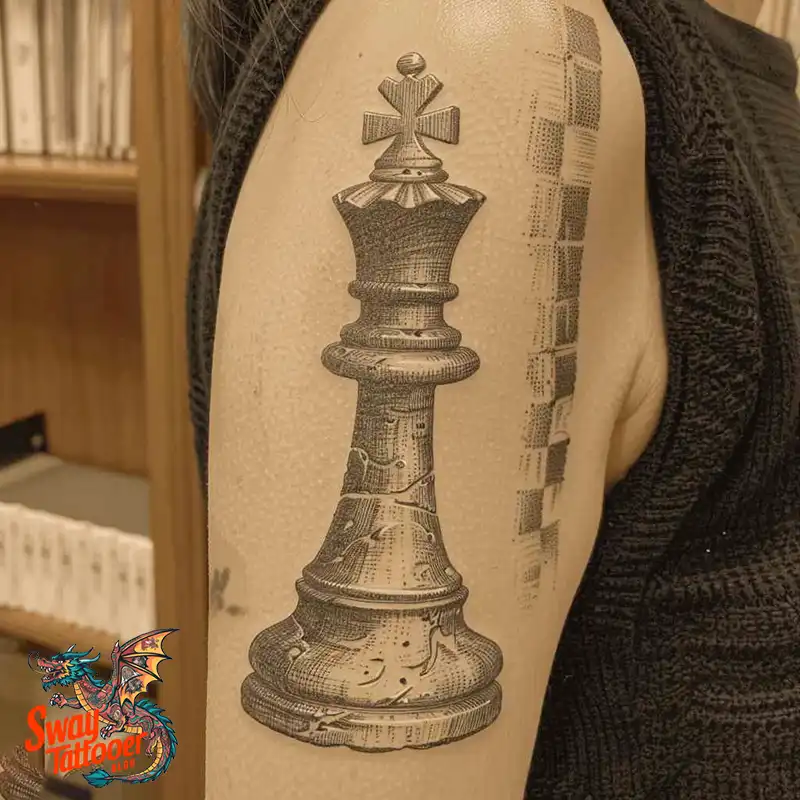
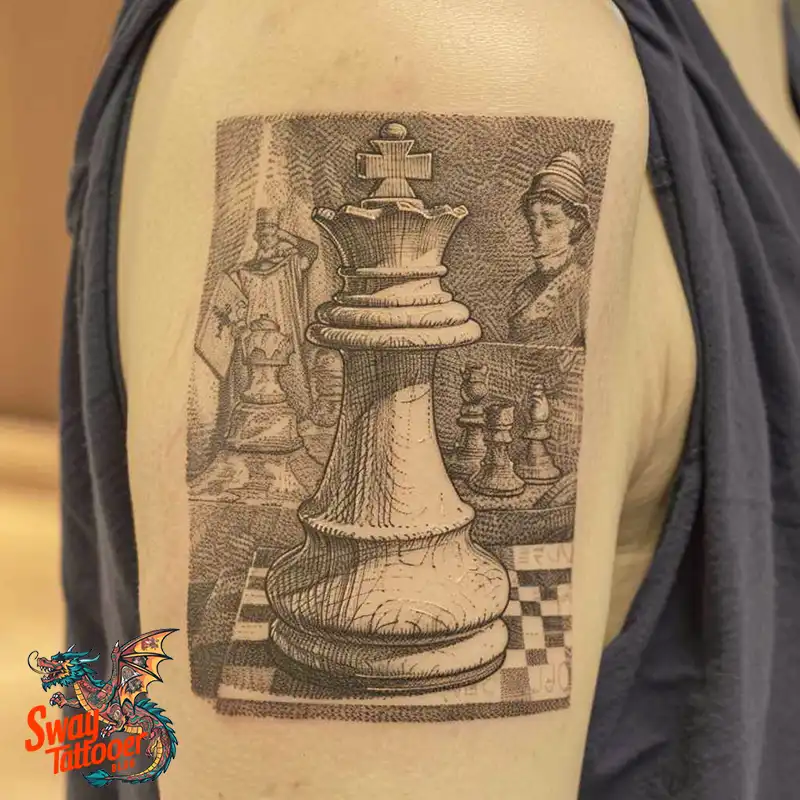
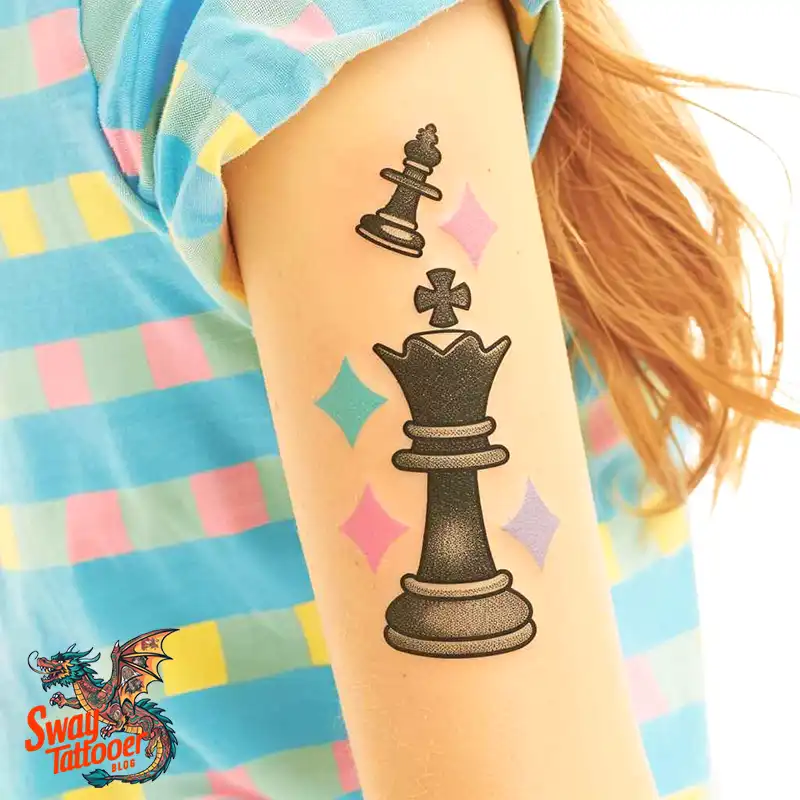
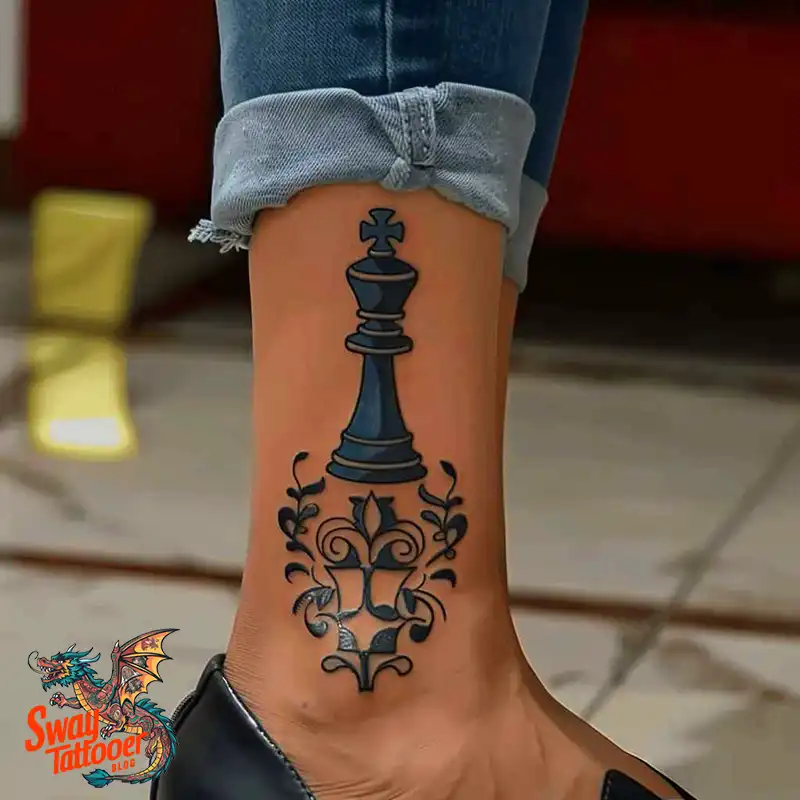
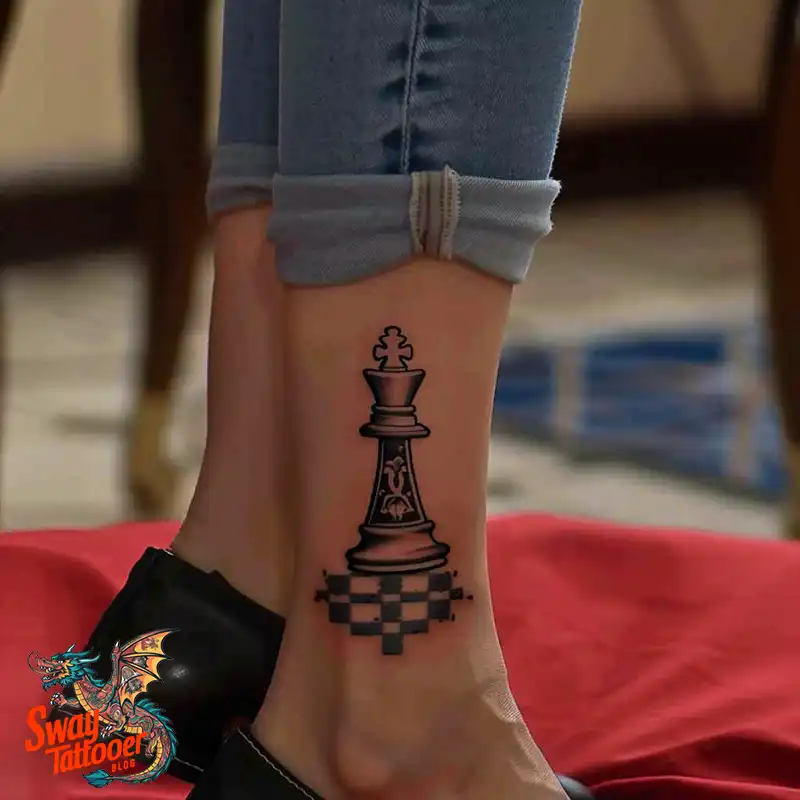
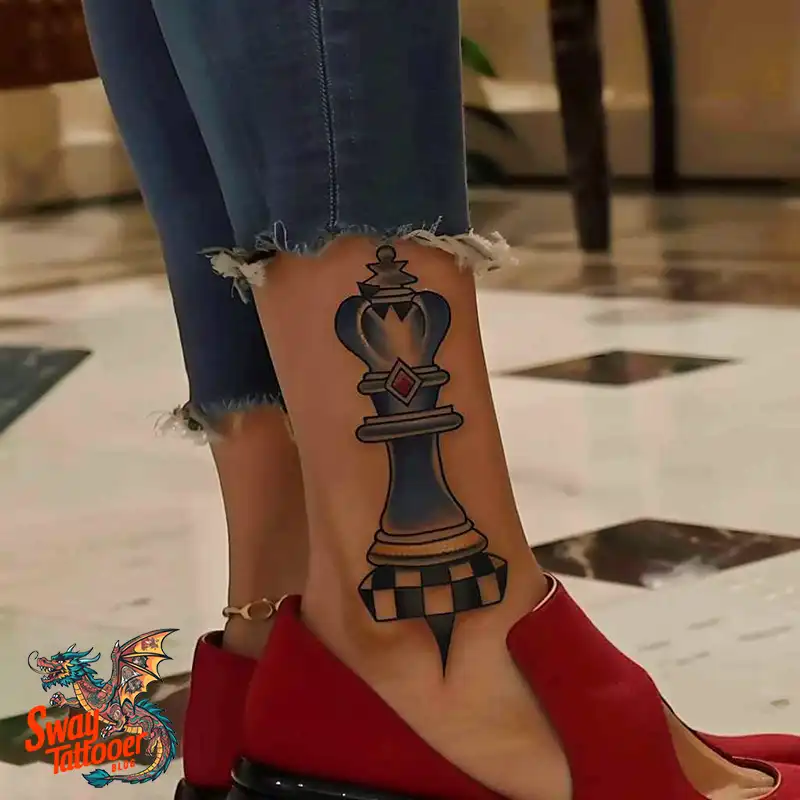
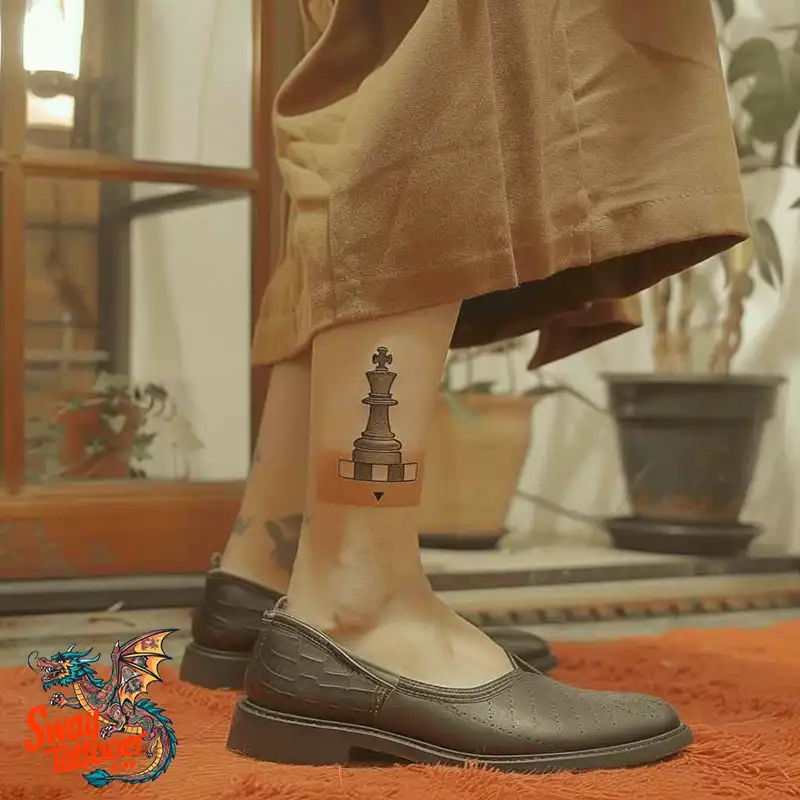
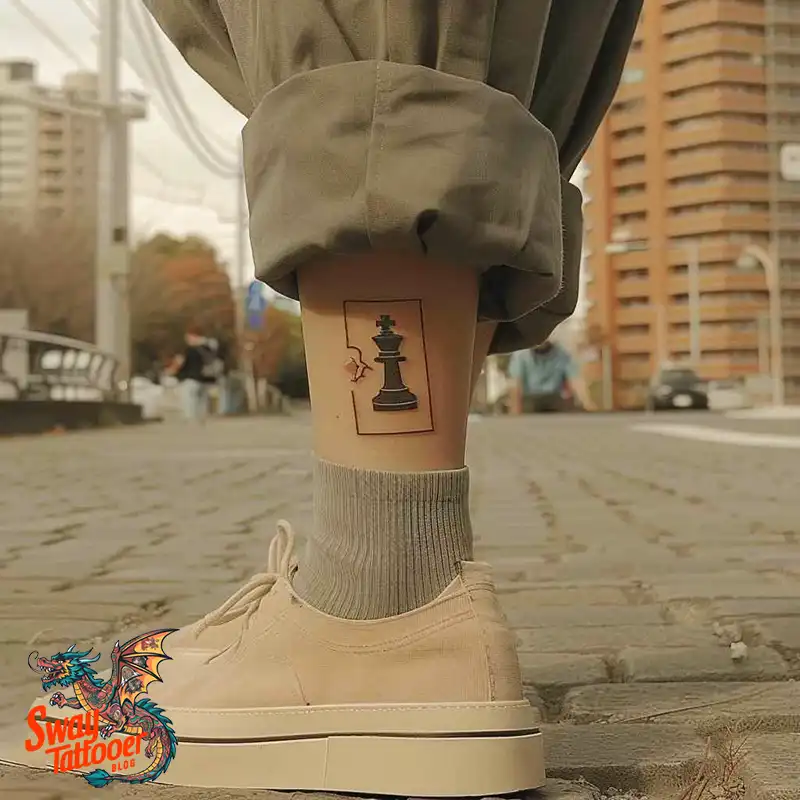
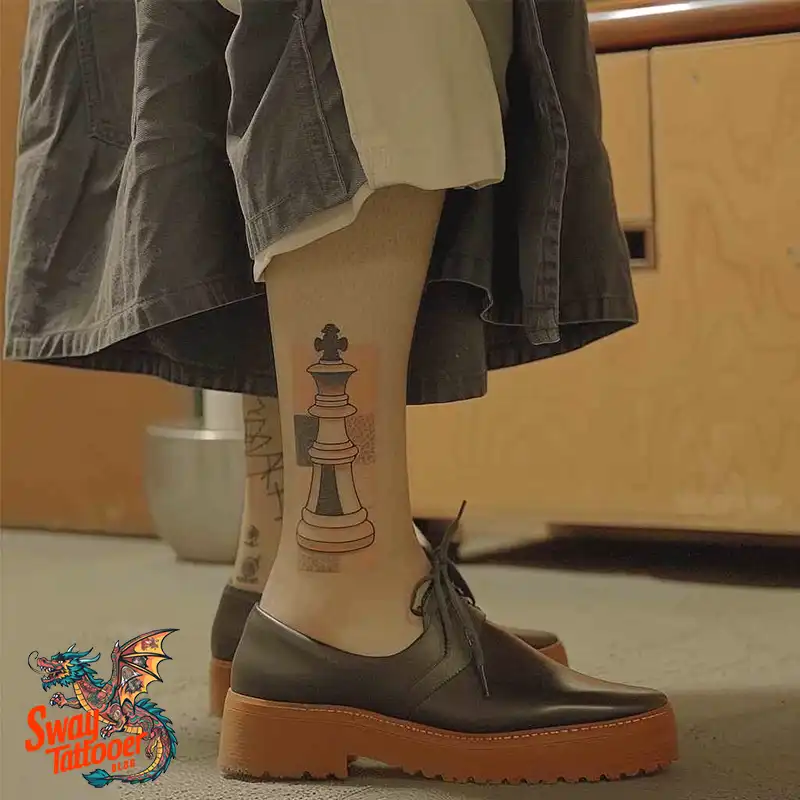
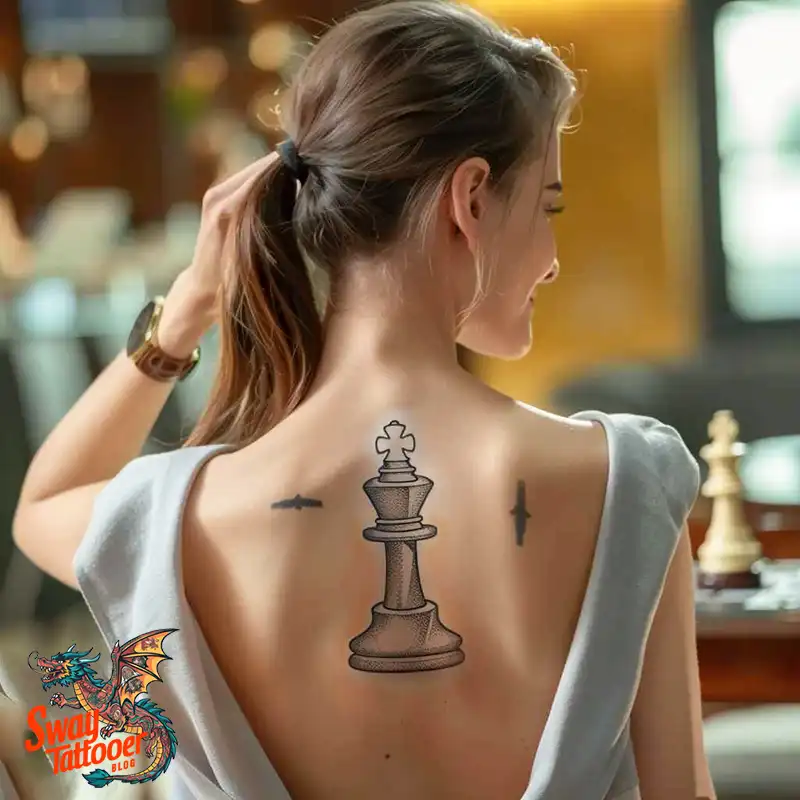
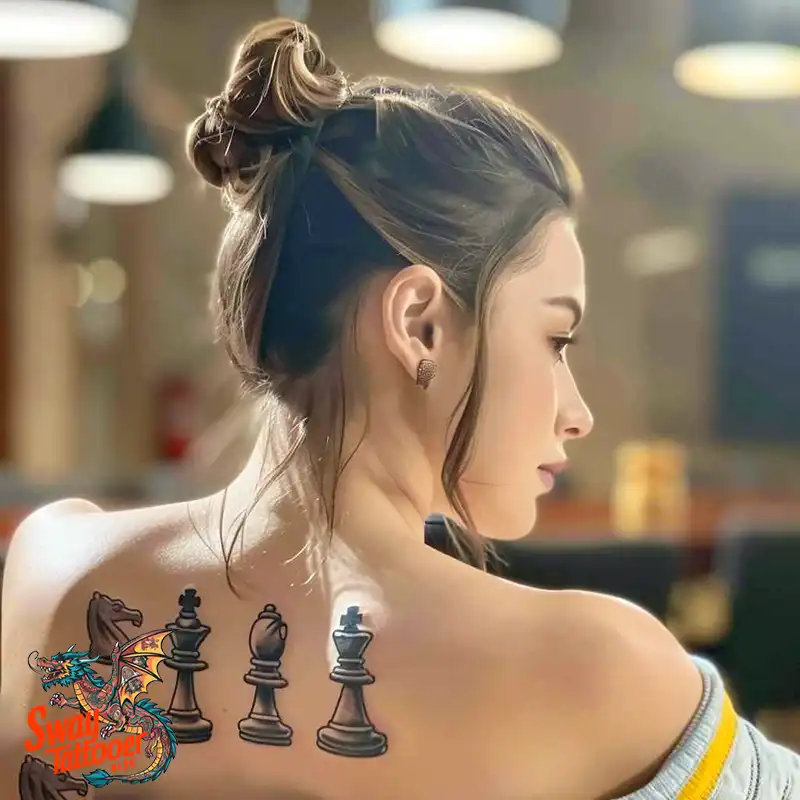
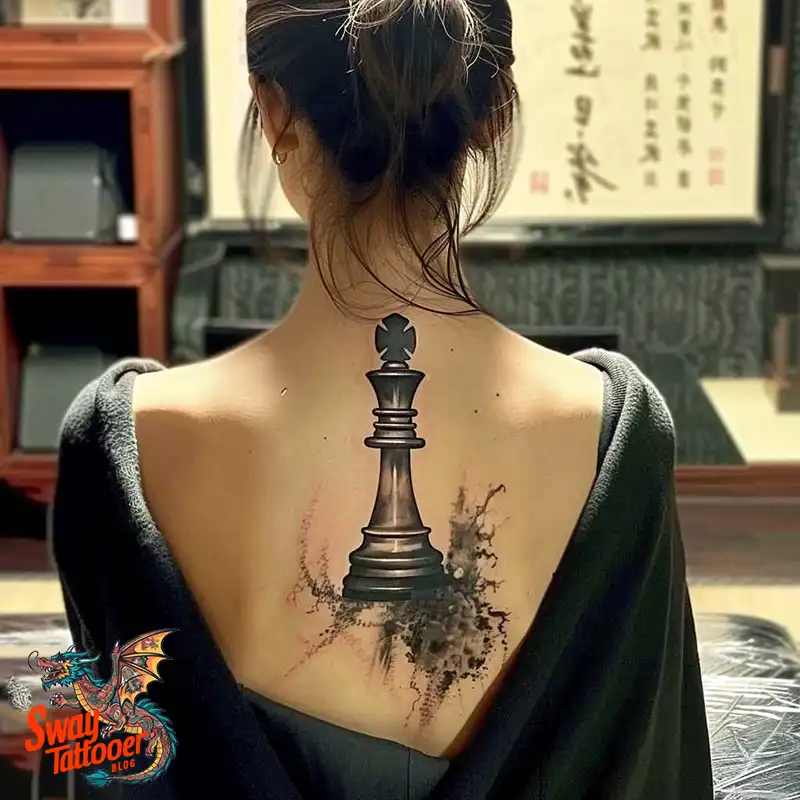
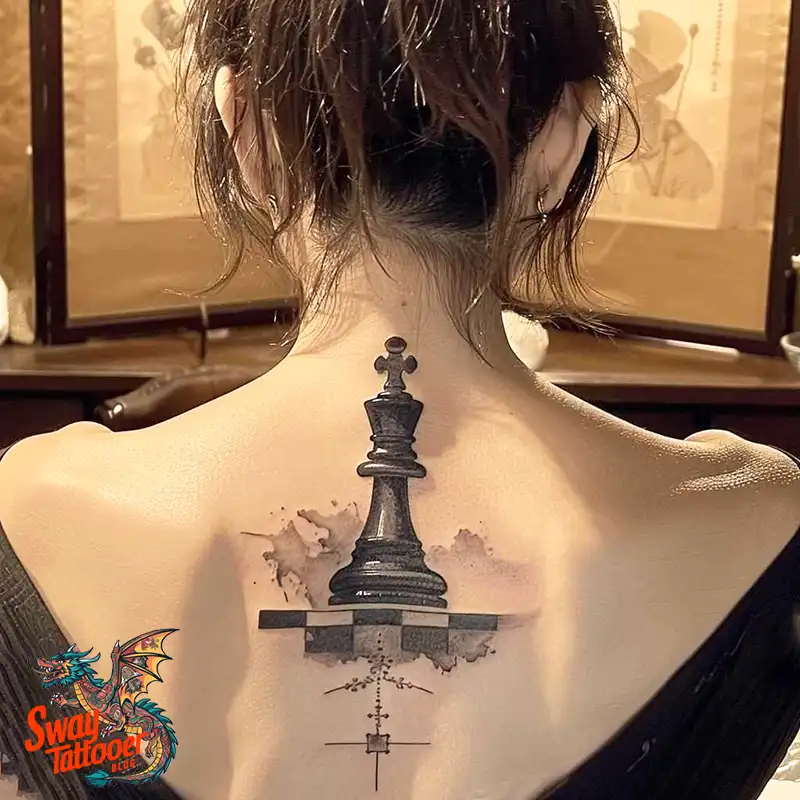
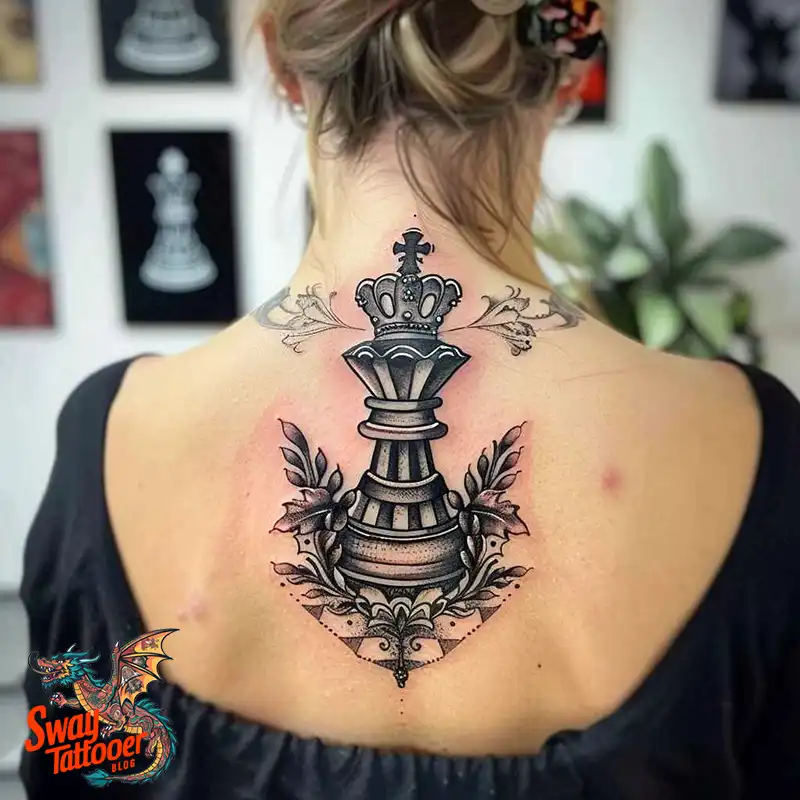
Styles That Make Chess Tattoos Pop
How the tattoo is drawn changes how it feels. Pick a style that matches your vibe.
Realism makes pieces look three-dimensional. You can see wood grain and steel shine. This works best for larger tattoos. Minimalist designs use simple lines and small shapes. They fit folks who like subtle ink. Watercolor adds soft color splashes behind pieces for a dreamy look. Trash polka uses bold black and red for a loud, gritty feel. Tribal or chaturanga styles nod to chess’s roots in India with strong patterns and bold lines.
Each style tells a different story. Pick the one that fits your taste and meaning.
A Short Look at Chess Tattoo History
Chess has a long history. The game began as chaturanga in India over a thousand years ago. Over the centuries, people around the world added layers of meaning to the pieces. Sailors and soldiers once used strong symbols, and later, artists added flair.
In modern times, TV shows and famous chefs helped push chess tattoos into the spotlight. The Queen’s Gambit series made queen pieces much more popular. Today, chess tattoos blend history, pop culture, and personal meaning.
Aftercare: Keep Your Tattoo Sharp
Good aftercare makes a big difference. Follow these easy steps so your tattoo heals well.
Keep the fresh tattoo covered for a few hours. Then wash gently with mild soap and warm water. Pat dry with a clean towel. Apply a thin layer of fragrance-free lotion or tattoo ointment. Avoid swimming and long baths while it heals. Keep it out of direct sunlight. Once healed, use sunscreen to stop fading.
If your tattoo is on your hand or forearm, clean it well after cooking or working. Hands meet lots of water and chemicals. Moisturize often to protect the ink.
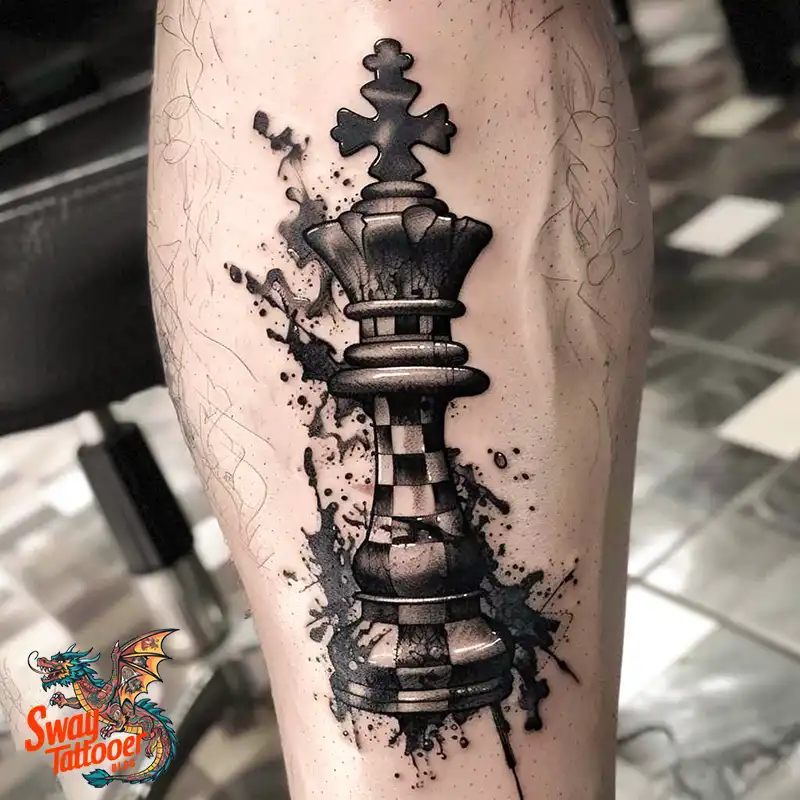
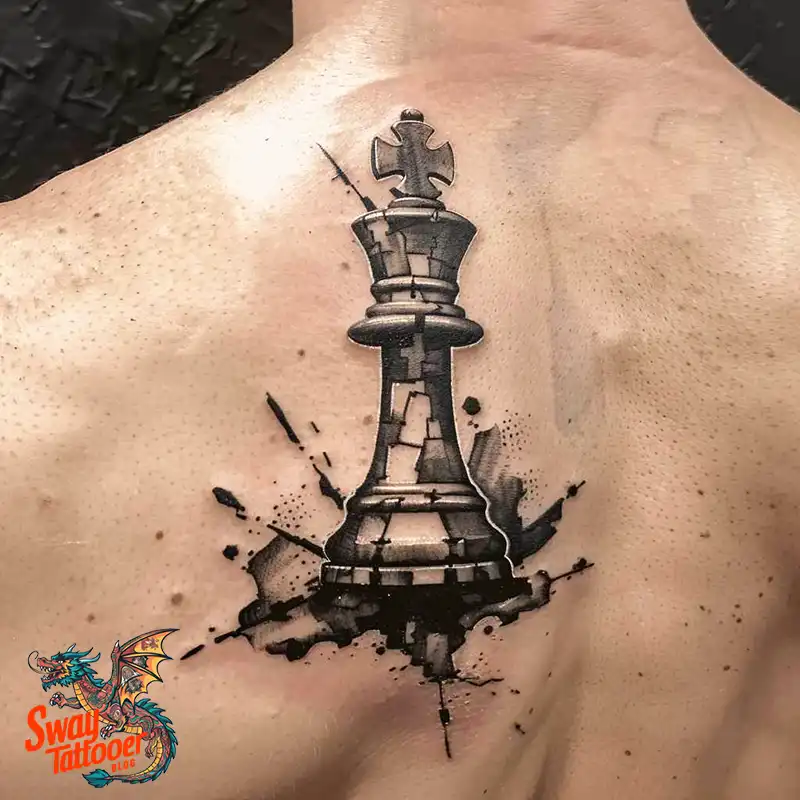
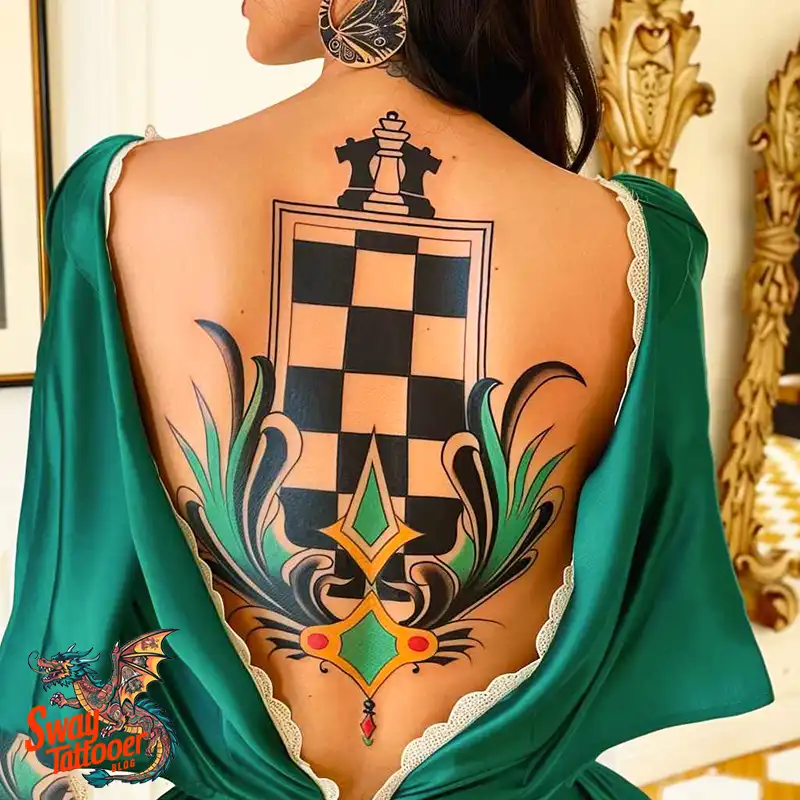
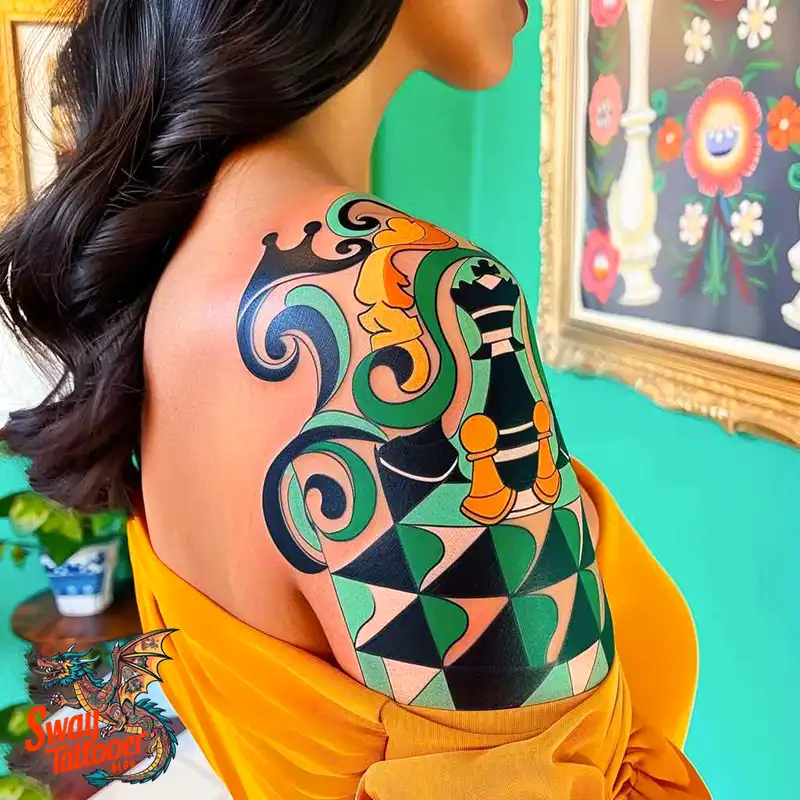
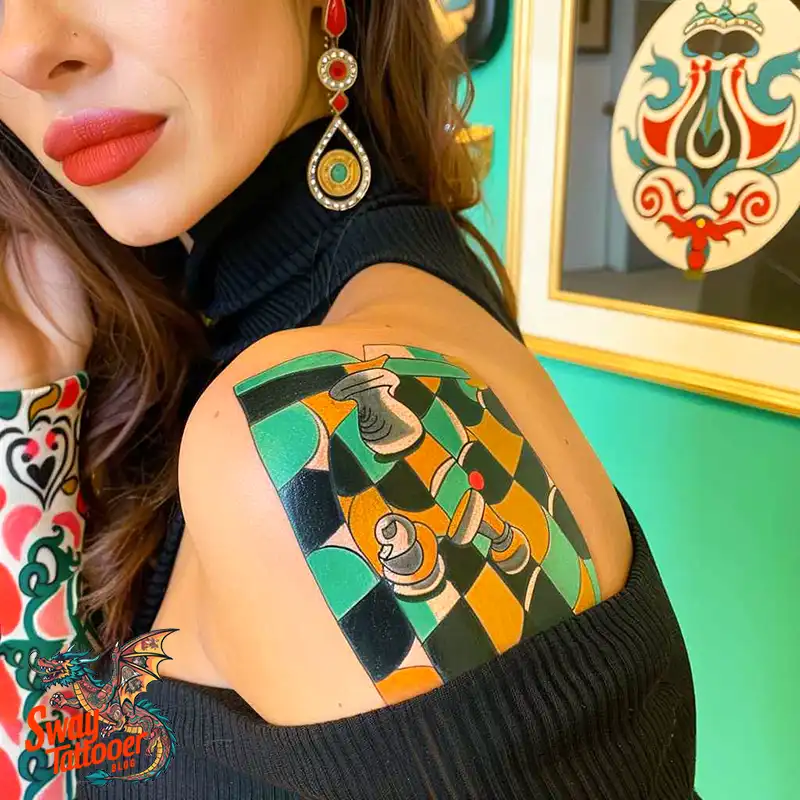
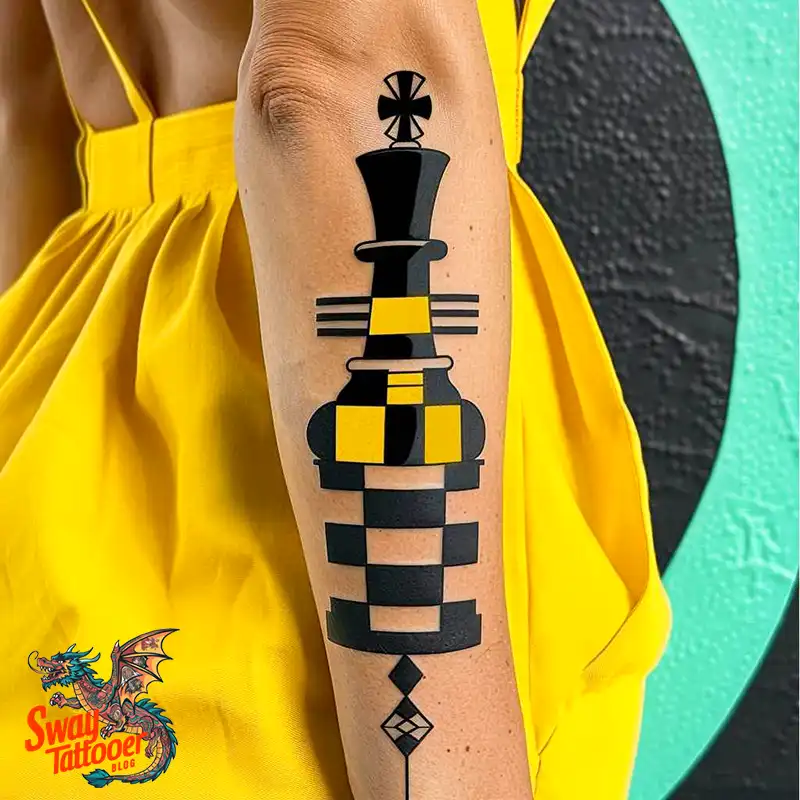
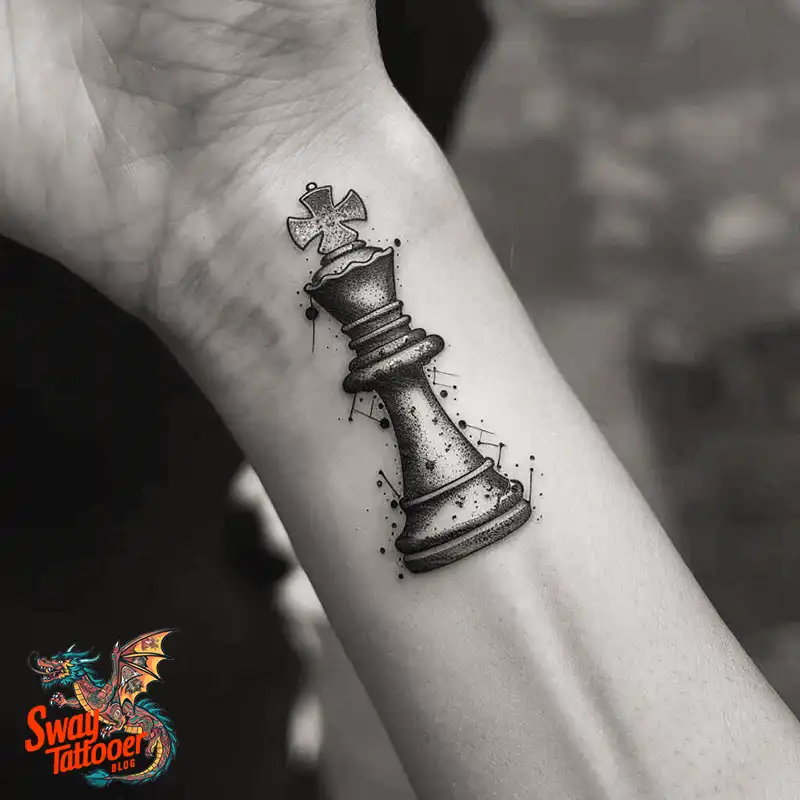
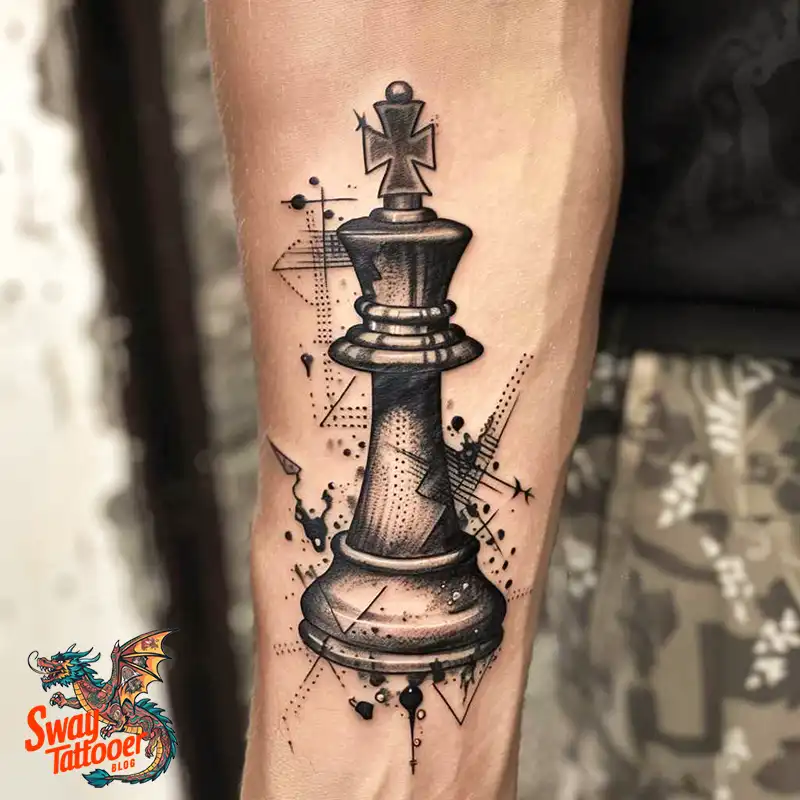
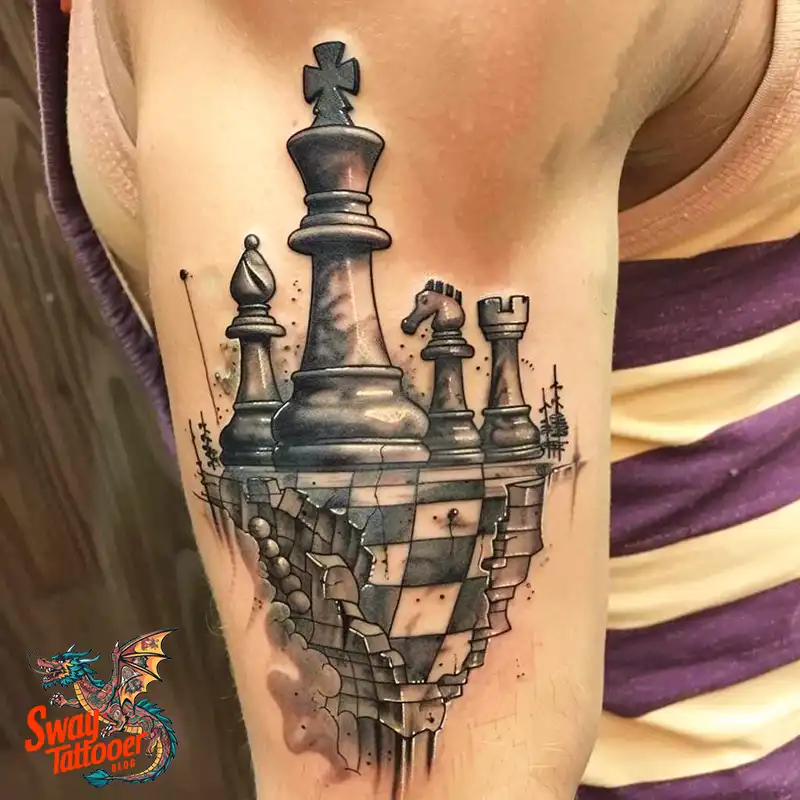
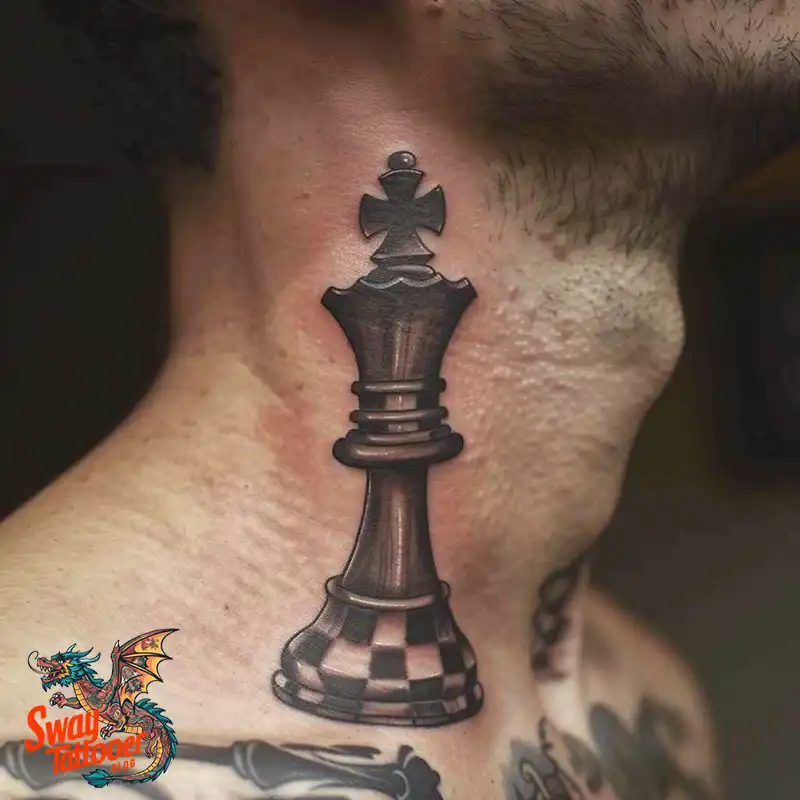
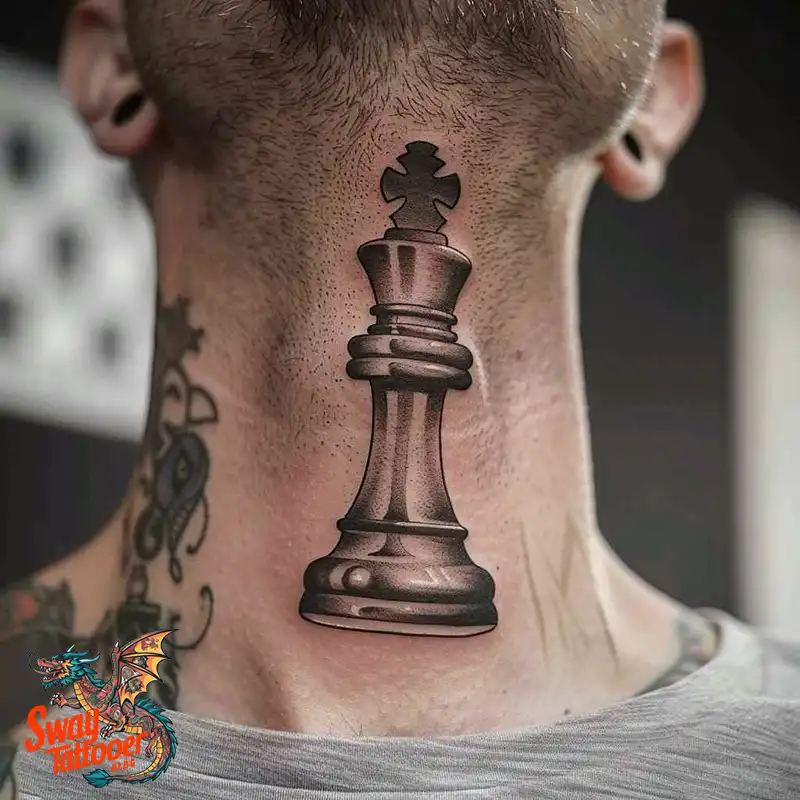
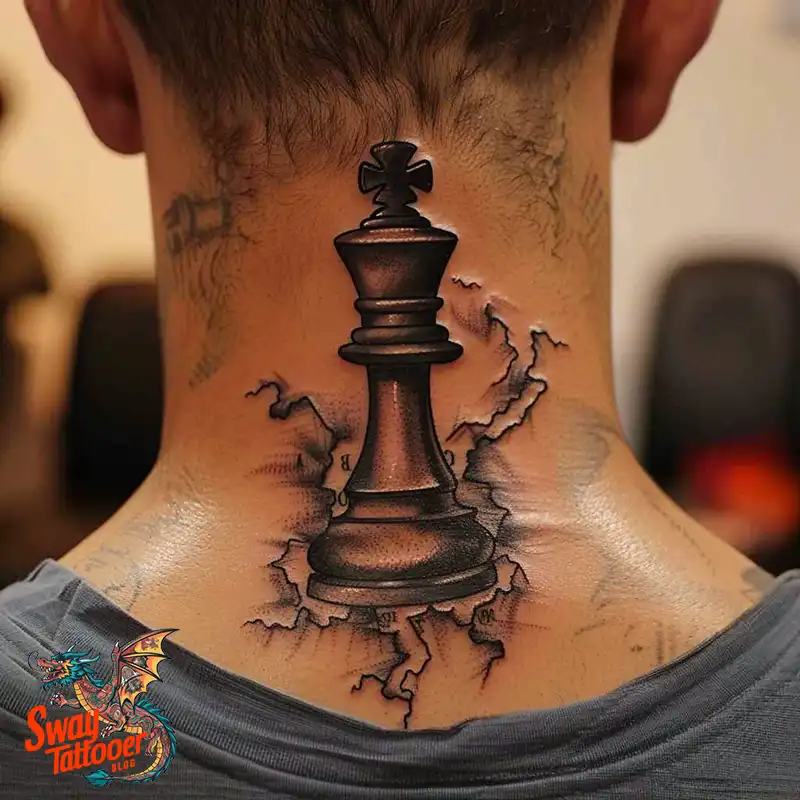
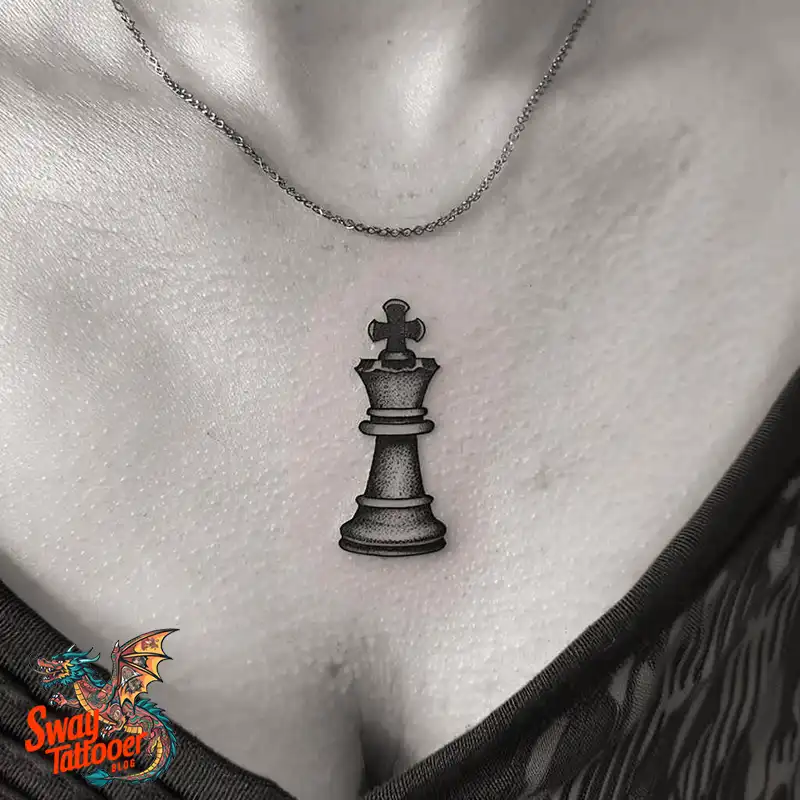
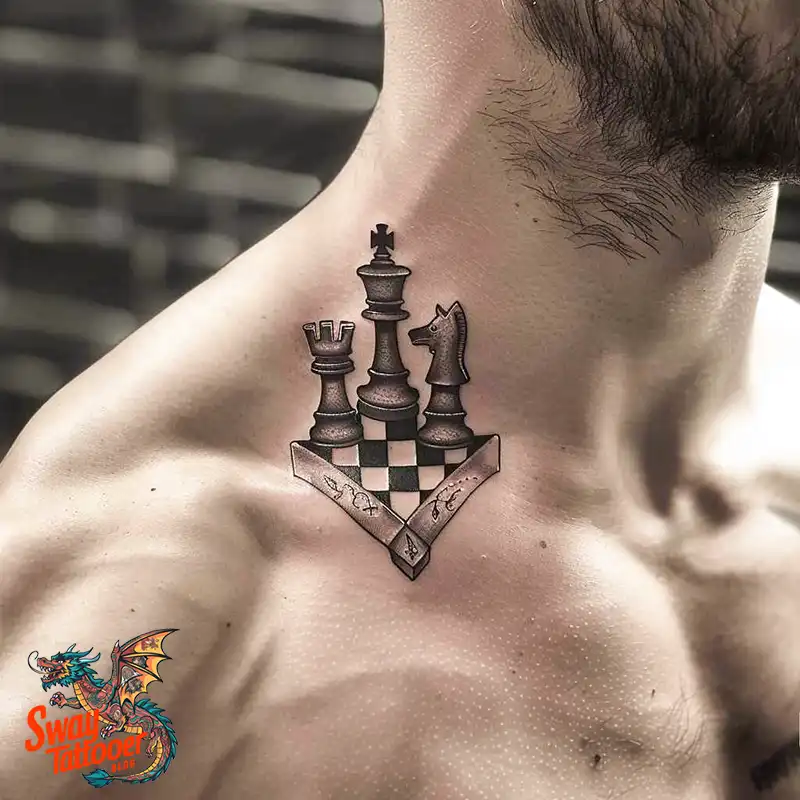
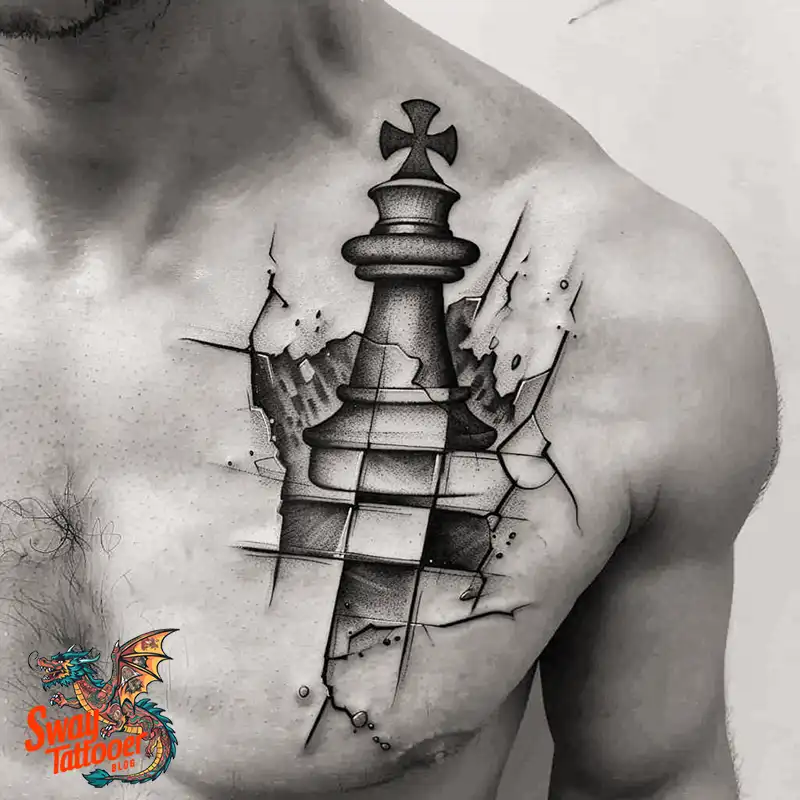
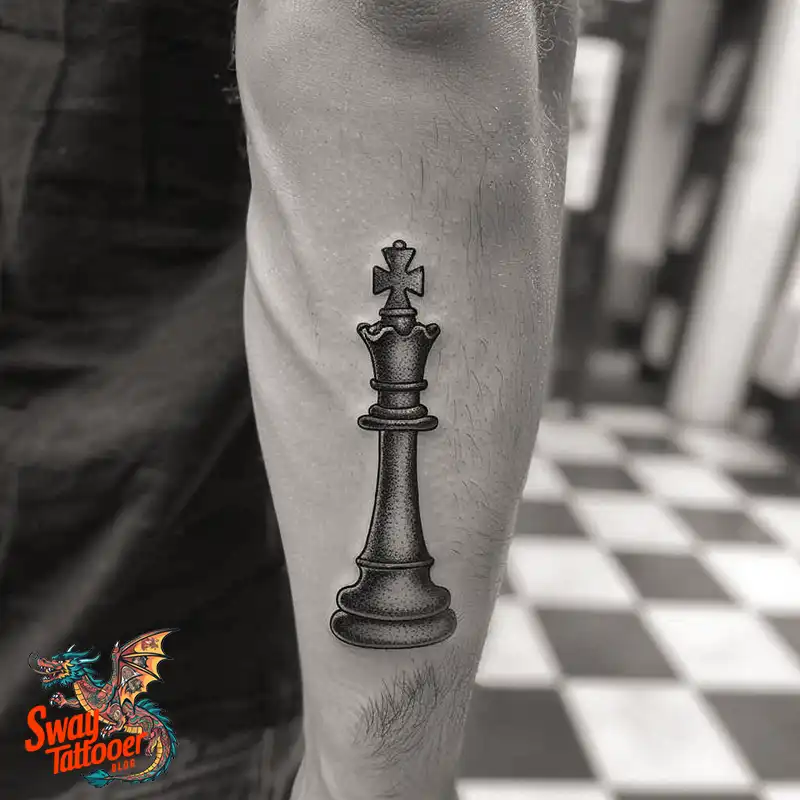
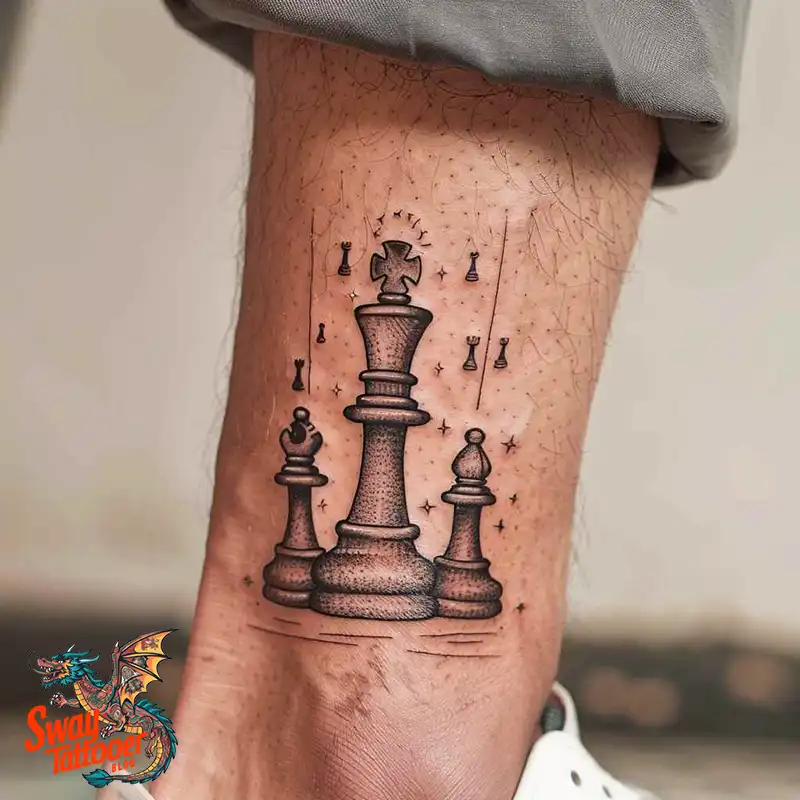
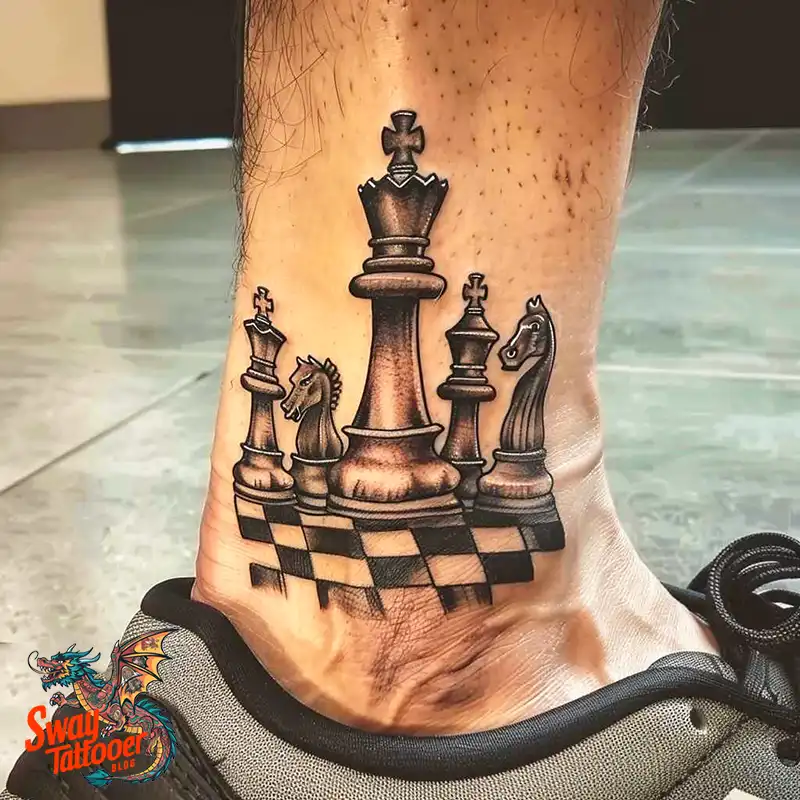
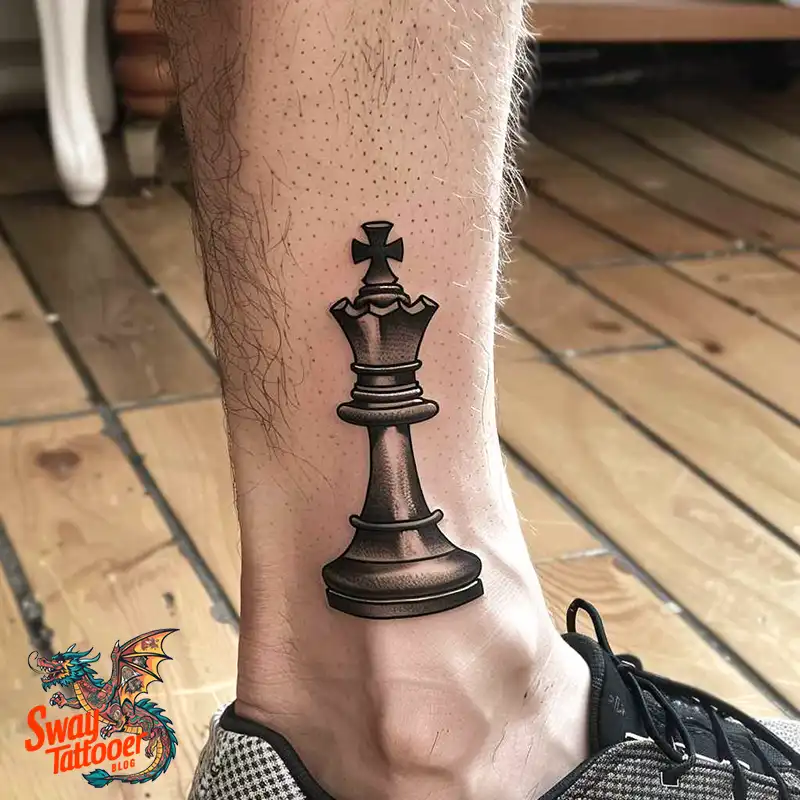
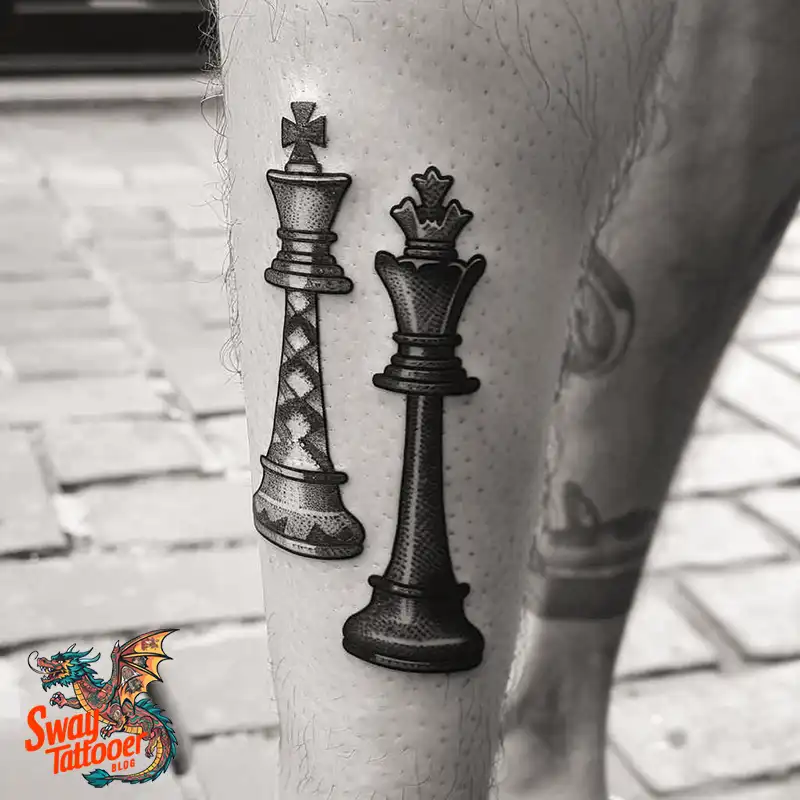
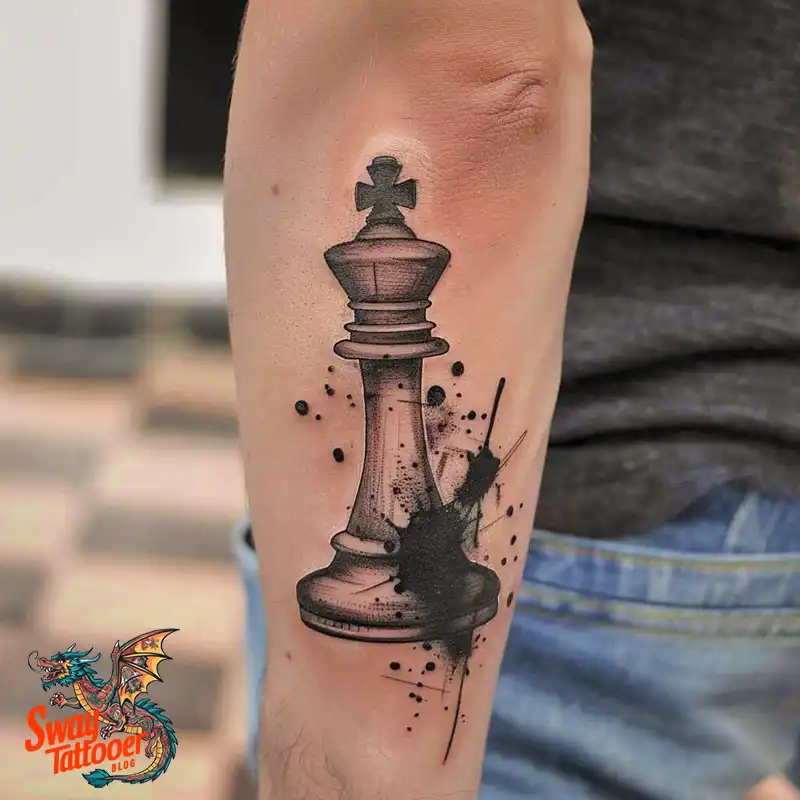
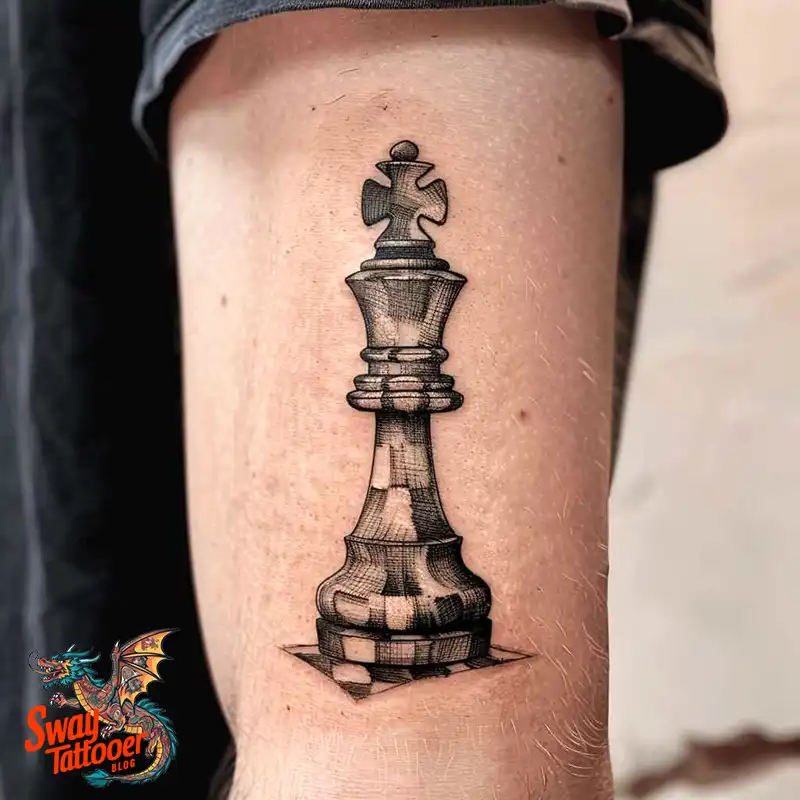
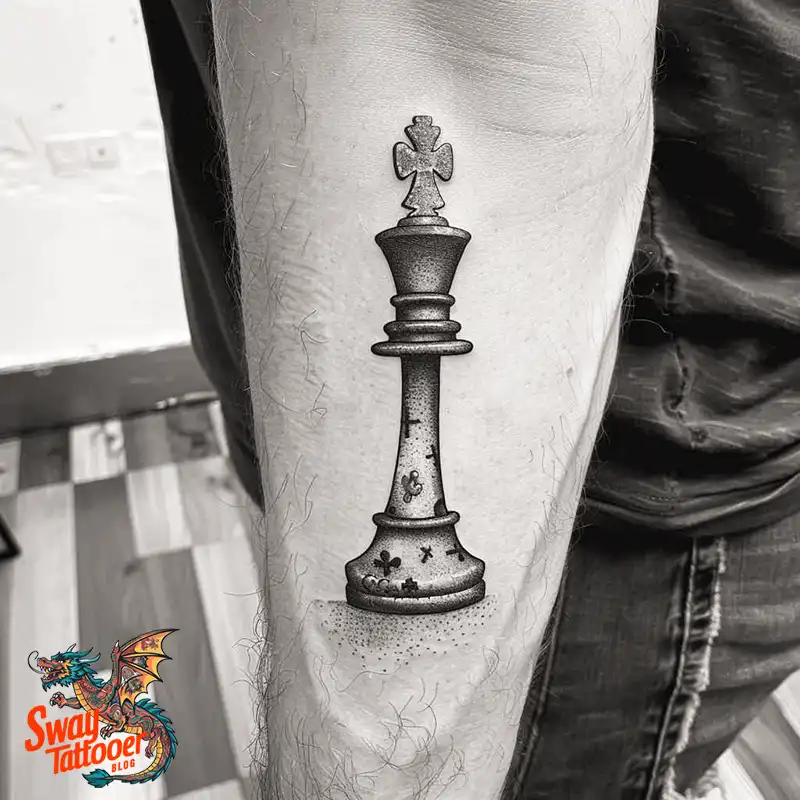
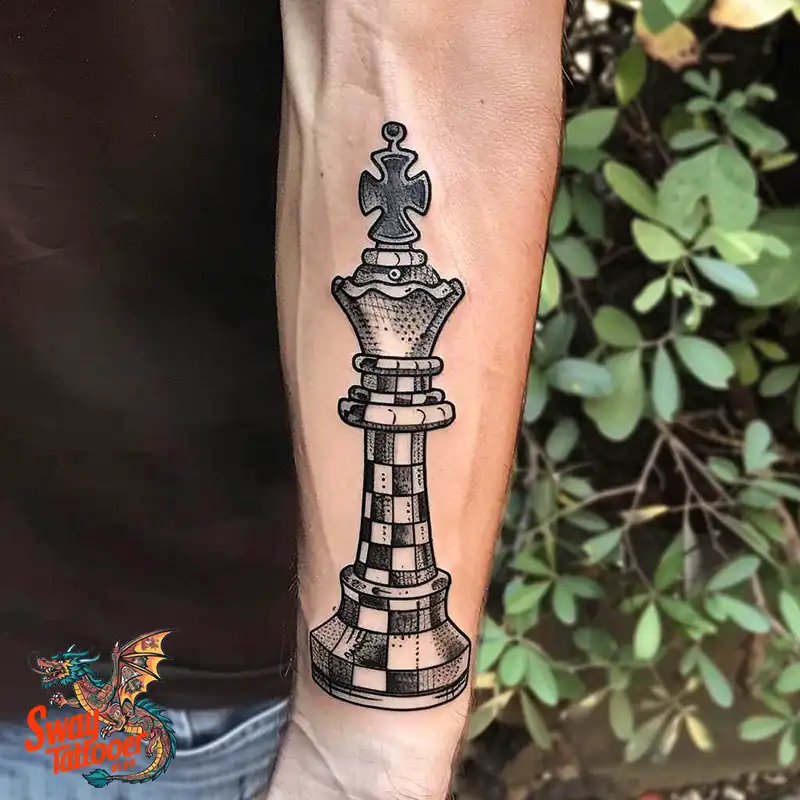
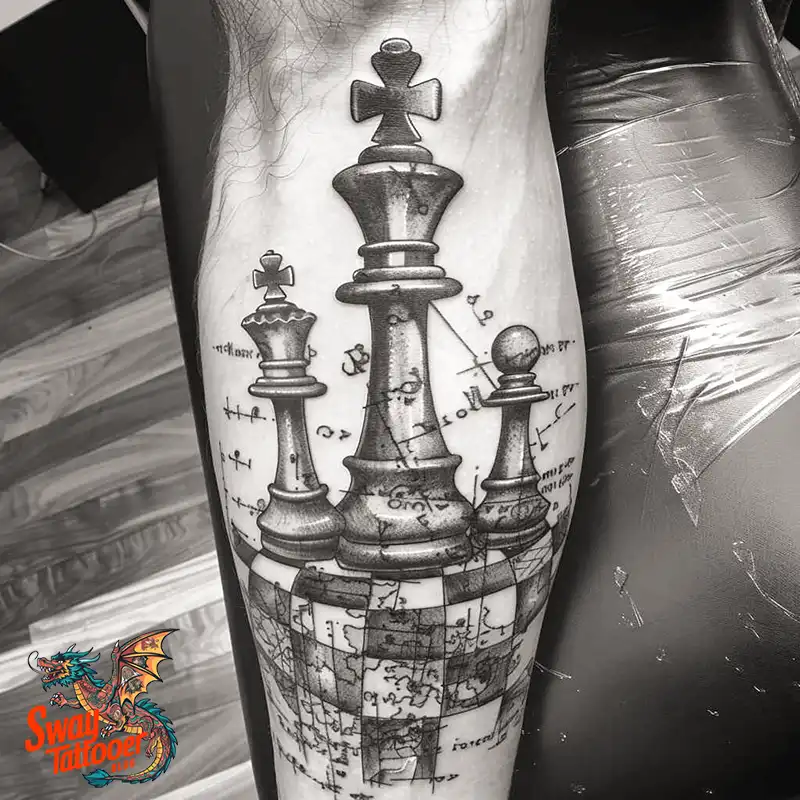
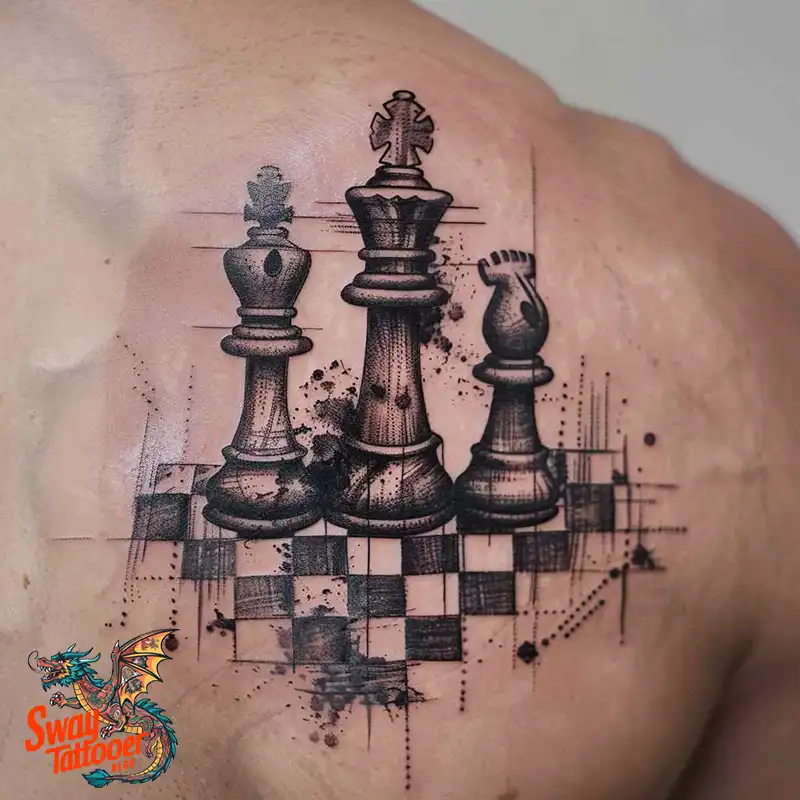
How to Find the Right Tattoo Artist
Pick an artist who knows chess tattoos or the style you want. Look at their portfolio. You want clean lines and healed work, not just fresh photos.
Ask questions in a consultation. Talk about size, placement, and how the tattoo will age. Check the studio for good hygiene. Read reviews and ask friends for recommendations. A good artist will help shape your idea into something that suits your body.
Things to Think About Before You Ink
A chess tattoo can be deep and personal. But think things through first.
Consider how visible the tattoo will be for work or school. Know that hand and finger tattoos fade faster. Think about the size you can live with long term. Remember, a tattoo can be changed, but removal is long and costly.
Also, be respectful of cultural symbols. Some designs borrow from old traditions. Make sure you understand the meaning behind any cultural or religious images you choose.
Final Thoughts
A chess tattoo is a smart and stylish choice. It shows more than a love for a game. It can show how you think, what you value, and how you move through life. Whether you choose a tiny pawn or a full board, your tattoo can tell a story.
Choose a design that fits your life and your meaning. Pick a good artist and care for the tattoo well. Your chess tattoo can stay sharp and full of meaning for years to come. So make your move—what will your next play be?


Leave a Reply